Design, Algorithms, and Applications of Microstrip Antennas for Image Acquisition: Systematic Review
Abstract
1. Introduction
2. Related Work
- In 2013, Reig and Ernesto [24] conducted a review of the most recent advances in printed antennas for sensor applications, collecting and analyzing information from a decade. They analyzed applications that employ these antennas, which are mainly used in wireless communication systems, specifically in sensor networks focusing on medium and long-range links, On-body applications, and On-chip applications. Regarding image acquisition, authors identified that RFID antennas are useful in applications related to creating detailed images of objects and environments. While the article does not focus on image acquisition using antennas, it addresses the topic as an emerging trend worth studying for potential future developments.
- In 2015, Priya et al. [25] conducted a review compiling, analyzing, and synthesizing information from different sources on the design, manufacturing, and applications of portable antennas based on textile materials. They described the interaction effects between a portable antenna and a human body, classifying them into two categories: antenna effects on the human body and human body effects on the antenna’s performance. For radar applications, they designed a broadband antenna prototype for a wearable antenna system with eight elements. An eight-element array was tested in the same frequency range, including a multifunction box for SAR imaging. Obtained SAR images provided detailed information about terrain topography, location, and movement of enemy forces. They also mentioned the need to balance efficiency, size, and bandwidth to design a small antenna for high-resolution imaging for hazard monitoring.
- A relevant study was proposed in 2018 by Mahmud et al. [26], who presented a review of microwave imaging obtained for breast cancer detection using UWB sensor antennas. They highlighted microwave imaging as a promising tool and briefly explained its operation based on analyzing backscattered signals with different dielectric properties of healthy and tumorous tissues. They also explained current detection technique limitations, focusing on microwave tomography imaging systems due to their simulations and measurements on 3D phantoms where algorithms are applied to improve reconstructed image quality. Finally, they discussed microwave imaging challenges, mentioning the difference between real breast tissue and simple prototypes. This review emphasized possible solutions to these challenges by proposing the combination of hybrid imaging and scattering programs with commercial electromagnetic (EM) simulators to find a suitable frequency range for correct imaging and better identification between healthy and tumorous cells.
- In 2019, an article published by Jumaat et al. [27] proposed a review of previous works on frequency selection systems and antenna configurations for microwave imaging in early breast cancer detection. They briefly described the importance of some techniques such as mammography, tomography, thermography, ultrasound, and microwave imaging. They highlighted microwave imaging advantages as it presents a simpler, safer system with cost-saving capabilities. The review emphasized the importance of selecting the operating frequency since calculations for antenna design depend on frequency. They analyzed antenna configurations for breast cancer detection through microwave imaging, focusing on single-layer antenna configurations and reviewing articles proposing single-layer antenna arrays. In this regard, the review highlighted that the appropriate broadband frequency is 1 to 20 GHz for microwave imaging. Additionally, they noted that the number of antennas in an array affects image resolution, recommending a large number of antennas for good image quality.
- In 2020, Imani et al. [28] presented a literature review on merging metasurface antenna design concepts and Computational Imaging (CI) techniques for imaging systems. First, they explained the metamaterial antenna operation capable of generating diverse radiation patterns. They also described hardware and software design applied to computational imaging in metasurface antennas. The review analyzed key factors for microwave imaging, including measurement quality, measurement number, signal fidelity, signal-to-noise ratio, and spatial sampling. Additionally, they proposed an alternative approach in the form of dynamic antennas, focusing on their configuration, evolution of DMAS, hybrid imaging systems, and single-frequency imaging.
- Finally, in 2021, Arora et al. [29] presented a literature review on microstrip patch antennas (MSPA) applied to the human body for disease detection and prevention. The authors addressed medical diagnosis for monitoring various pathological changes related to breast cancer, conducting a detailed evaluation using microwave imaging techniques. This technique, based on differences in dielectric properties between healthy and cancerous breast tissue, provides information through images about cancerous tissue presence. They described a broadband patch antenna model for tumor detection, which can radiate directly into breast tissue. For breast cancer monitoring, they proposed a patch antenna with a slot and forked feed for radar-based microwave imaging. Additionally, for monitoring skin, bone, and muscle pathologies, they suggested a compact implantable patch antenna design with slightly high signal waves to obtain tissue images and assess their condition.
3. Methodology
- RQ1: What are the key design characteristics and properties of microstrip antennas used for image acquisition?This research question aims to identify key trends and developments in antenna geometry, material selection, and electromagnetic properties influencing the performance of microstrip antennas in imaging applications. Unlike previous studies, this question enables a comparative analysis of various design configurations concerning their structural characteristics.
- RQ2: Which algorithms are most commonly employed for image reconstruction using microstrip antennas?This research question explores the relationship between algorithms used for image reconstruction and microstrip antenna performance in generating high-quality images. The goal is to identify the most frequently employed algorithms and their correlation with other structural characteristics.
- RQ3: What are the primary applications of microstrip antennas in image acquisition?This research question aims to map the diverse application fields of microstrip antennas in imaging acquisition, covering areas such as medicine, security, environmental monitoring, and other emerging domains. It seeks to provide a comprehensive overview of how these antennas are utilized across various sectors to meet specific imaging requirements. Unlike previous studies that primarily focused on the role of microstrip antennas in medical diagnosis, this review expands the scope by evaluating their applicability across a broader range of industries. This extended perspective highlights the versatility of microstrip antennas and underscores their potential to address imaging challenges in both established and emerging applications.
- Identification: To begin, a filtering process was conducted based on the year of publication. By extracting articles metadata, a graph was generated according to publication year, as shown in Figure 2. There has been an increase in article publications related to the topic from the year 2013 onwards, so all previous publications were excluded. The search process and the downloading of metadata ended in June 2023. They cover a decade of articles in total. Additionally, state-of-the-art reviews that did not provide an analysis or lacked a scientific research basis were eliminated. Duplicate articles were also excluded.
- Screening: Articles that were not directly related to the review topic were excluded. Each article was reviewed based on the topic, abstract, and keywords. Subsequently, documents that were not available or did not offer open access were discarded. The screening process was conducted by three independent reviewers, who evaluated each record and report retrieved. Each reviewer worked independently to ensure objectivity, and discrepancies were resolved through discussion until a consensus was reached. No automation tools were used during the screening process.
- Included: Finally, A detailed review of each article was conducted, focusing on the characteristics of microstrip antennas, including patch dimensions, bandwidth, operating frequency, substrate material, type of algorithm applied for image reconstruction, and the corresponding application field.
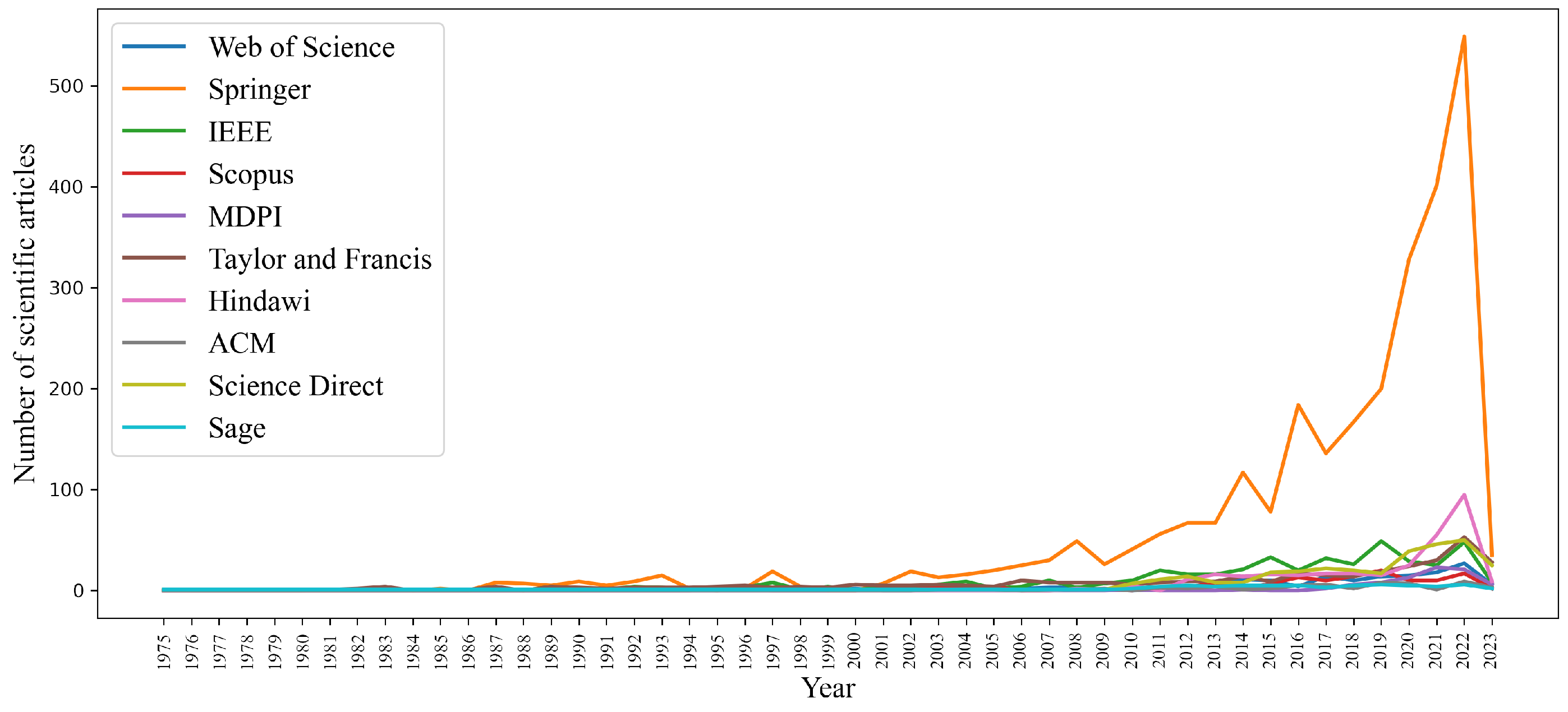

4. Results and Discussion
- Antenna structure (geometric design and substrate).
- Type of reconstruction algorithm.
- Type of application.
4.1. RQ1. What Are the Key Design Characteristics and Properties of Microstrip Antennas Used for Image Acquisition?
- Geometries: Predominant shapes included rectangular, circular, and elliptical patches. Some studies also explored more complex designs such as fractal and nature-inspired geometries to enhance performance and adaptability.
- Substrate materials: FR4 was the most commonly used substrate due to its low cost and suitable dielectric properties. Other materials included Rogers RT/duroid and various ceramics, which were chosen for their specific electromagnetic characteristics.
- Frequency bands: Antennas operated across a wide range of frequencies, spanning from 1 GHz to 30 GHz. The S and C bands were particularly notable for their frequent use in medical applications and offered a balance between penetration depth and resolution.
4.2. Article Classification by Geometric Design
Article Classification by Substrate Material
4.3. RQ2.Which Algorithms Are Most Commonly Employed for Image Reconstruction Using Microstrip Antennas?
4.3.1. Data-Independent Beamforming (DI) Algorithms
- Delay-and-Sum (DAS) algorithm.
- −
- represents the intensity at the focal point .
- −
- M denotes the total number of sensors or channels.
- −
- corresponds to the backscattered signal recorded by sensor i.
- −
- is the delay time required for the signal to travel back and forth between the focal point r and antenna i.
- −
- represents the distance between antenna i and the focal point r.
- −
- c denotes the propagation speed of the wave in the medium.
- −
- represents the beamformer output at time instant .
- −
- is a weighting coefficient applied to the signal from sensor n.
- −
- denotes the signal from sensor n delayed by
- Delay-Multiply-And-Sum (DMAS) algorithm
- −
- is the estimated energy signal.
- −
- M is the total number of observations.
- −
- is the i-th observation after time alignment according to the focal point.
- −
- represents the i-th observation before alignment.
- −
- denotes the round-trip delay from the transmitting antenna to focal point and back to the receiving antenna.
- −
- W is the window length within which the response from the focal point is expected.
- Improved Delay-And-Sum (IDAS) algorithm
- −
- represents the Quality Factor, which measures the signals coherence at the focal point r.
- −
- is a weighting factor applied to each signal.
- −
- denotes the received signal with a specific delay .
- −
- is the time window over which integration is performed.
- −
- Energy curve is normalized using , where represents the standard deviation of the energy.
- −
- Coefficient a is selected as the Quality Factor (QF) of the focal point r.
- Coherence Factor Based Delay-And-Sum (DF-DAS) algorithm
- −
- represents the reconstructed signal at position r.
- −
- is the coherence factor that adjusts each sensor’s contribution.
- −
- denotes the signal received by sensor i with a delay .
- −
- N is the total number of sensors.
- Delay-And-Sum Integration (DASI) algorithm
- −
- represents the reconstructed signal at position r.
- −
- denotes the weights applied to each sensor.
- −
- is the signal received by sensor i with a delay .
- −
- N is the total number of sensors.
- −
- and are the integration limits in the time domain.
4.3.2. Artifact Elimination Algorithms
- −
- represents the averaged signal.
- −
- denotes the signal from sensor i.
- −
- N is the total number of sensors or acquisitions.
- −
- X represents the observed (mixed) signal.
- −
- A denotes the mixing matrix.
- −
- S corresponds to the source signal without artifacts.
- −
- is the signal after artifact removal.
- −
- represents the wavelet transform coefficients.
- −
- are the basis functions of the wavelet transform.
4.3.3. Finite Difference Time (FDTD) Algorithms
- −
- represent the components of the electric field.
- −
- denote the components of the magnetic field.
- −
- is the permittivity of the material.
- −
- represents the permeability of the material.
- −
- correspond to the spatial step size in each direction.
- −
- is the time step.
- −
- n denotes the time index.
4.3.4. Analytical Algorithms
- −
- represents the reconstructed function in the spatial domain.
- −
- denotes the Radon transform of the original image.
- −
- is the frequency in the Fourier domain.
- −
- corresponds to the projection angle.
- −
- is a reconstruction filter (such as the Ram-Lak filter).
- −
- represents the image in the Fourier domain.
4.3.5. Iterative Algorithms
- −
- is the updated estimate at iteration .
- −
- represents the estimate at iteration k.
- −
- is the step size or learning factor.
- −
- denotes the residual or correction computed at iteration k.
- −
- A is the system matrix.
- −
- b represents the vector of independent terms.
- −
- denotes the difference between the estimated solution and the expected result.
4.3.6. Ground Penetrating Radar (GPR) Algorithms
- −
- E represents the electric field.
- −
- H denotes the magnetic field.
- −
- is the magnetic permeability.
- −
- corresponds to the dielectric permittivity.
- −
- represents the conductivity of the medium.
- −
- R is the reflection coefficient.
- −
- and represent the dielectric permittivities of the adjacent media.
- −
- t represents the signal travel time.
- −
- d denotes the depth of the detected object.
- −
- v is the wave propagation speed in the medium.
4.3.7. Article Classification by Image Reconstruction Algorithms
4.4. RQ3. What Are the Primary Applications of Microstrip Antennas in Image Acquisition?
- Breast Cancer Detection: This accounted for 48.53% of the studies, predominantly using circular and elliptical patches. The high incidence of breast cancer has driven extensive research and development in this area, utilizing microstrip antennas to enhance detection accuracy and imaging quality.
- Brain Tumor Detection and Vascular Disease Monitoring: These were other notable applications, leveraging the precision and adaptability of microstrip antennas to detect and monitor complex medical conditions.
- Non-Medical Applications: These included environmental monitoring and security surveillance, showcasing the versatility of microstrip antennas beyond medical uses. In environmental monitoring, they are used for detecting and analyzing changes in various natural phenomena. In security surveillance, they are employed for object detection and recognition, as well as for identifying people, and can be integrated into radar systems [126].
Article Classification by Application Type
5. Antenna Constructive Characteristics: Correlation Analysis
5.1. Analysis of Relationship Between Application and Bandwith
5.2. Analysis of Relationship Between Application and Operating Frequencies
5.3. Analysis of Relationship Between Application and Antenna Size
5.4. Analysis of Relationship Between Image Reconstruction Algorithms and Bandwidth
5.5. Analysis of Relationship Between Image Reconstruction Algorithms and Operating Frequency
5.6. Analysis of Relationship Between Image Reconstruction Algorithms and Antenna Size
6. Correlation Analysis Between Variable Classifications
7. Conclusions
Author Contributions
Funding
Institutional Review Board Statement
Informed Consent Statement
Data Availability Statement
Conflicts of Interest
Abbreviations
| CT | computed tomography |
| CMI | confocal microwave imaging |
| PRISMA | Preferred Reporting Items for Systematic Reviews and Meta-Analyses |
| RFID | Radio Frequency Identification |
| SAR | Specific Absorption Rate |
| EM | electromagnetic |
| CI | Confocal Imaging |
| DMAS | Delay-Multiply-and-Sum Algorithm |
| MSPA | Multi-Stacked Patch Antenna |
| ACM | Association for Computing Machinery |
| MDPI | Multidisciplinary Digital Publishing Institute |
| UWB | Ultra-Wideband |
| FR4 | Flame Retardant 4 |
| AMC | Artificial Magnetic Conductor |
| MTM | Metamaterials |
| CPW | coplanar waveguide |
| CSRR | complementary split ring resonator |
| PCB | Printed Circuit Board |
| LP-ASP | low-profile aperture-stacked patch antenna |
| DAS | Delay-and-Sum |
| FDTD | Finite-Difference Time-Domain |
| DI | data-independent beamforming |
| GPR | Ground Penetrating Radar |
| IC-CF-DMAS | Iterative Correction with Coherent Factor Delay-Multiply-and-Sum |
| HFSS | High Frequency Structure System |
| DBIM | distorted Born iterative method |
| DASI | Delay-And-Sum Imaging |
| IC-DAS | Iterative Correction Delay-And-Sum |
| ADAL | Alternate Direction Augmented Lagrangian |
| FBP | Filtered Backprojection |
| GBP | global backprojection |
| IDAS | Iterative Delay-And-Sum |
| RTI | Radio Tomographic Imaging |
| IRM | Iterative Reconstruction Method |
| AZIM | Antenna Zoom Imaging Method |
| IC | Iterative Correction |
| CF | Coherent Factor |
| SAMPA | Stacked Aperture-Coupled Microstrip Patch Antenna |
| MERIT | Medical Electromagnetic Radiation Imaging Tool |
| ADAL | alternate direction method and augmented Lagrangian |
| TWPS | TW primate System |
| MRI | Magnetic Resonance Imaging |
| MWI | microwave imaging |
| ESAR | Enhanced Synthetic Aperture Radar |
| RTI | Radio Tomographic Imaging |
| IQR | Interquartile Range |
Appendix A
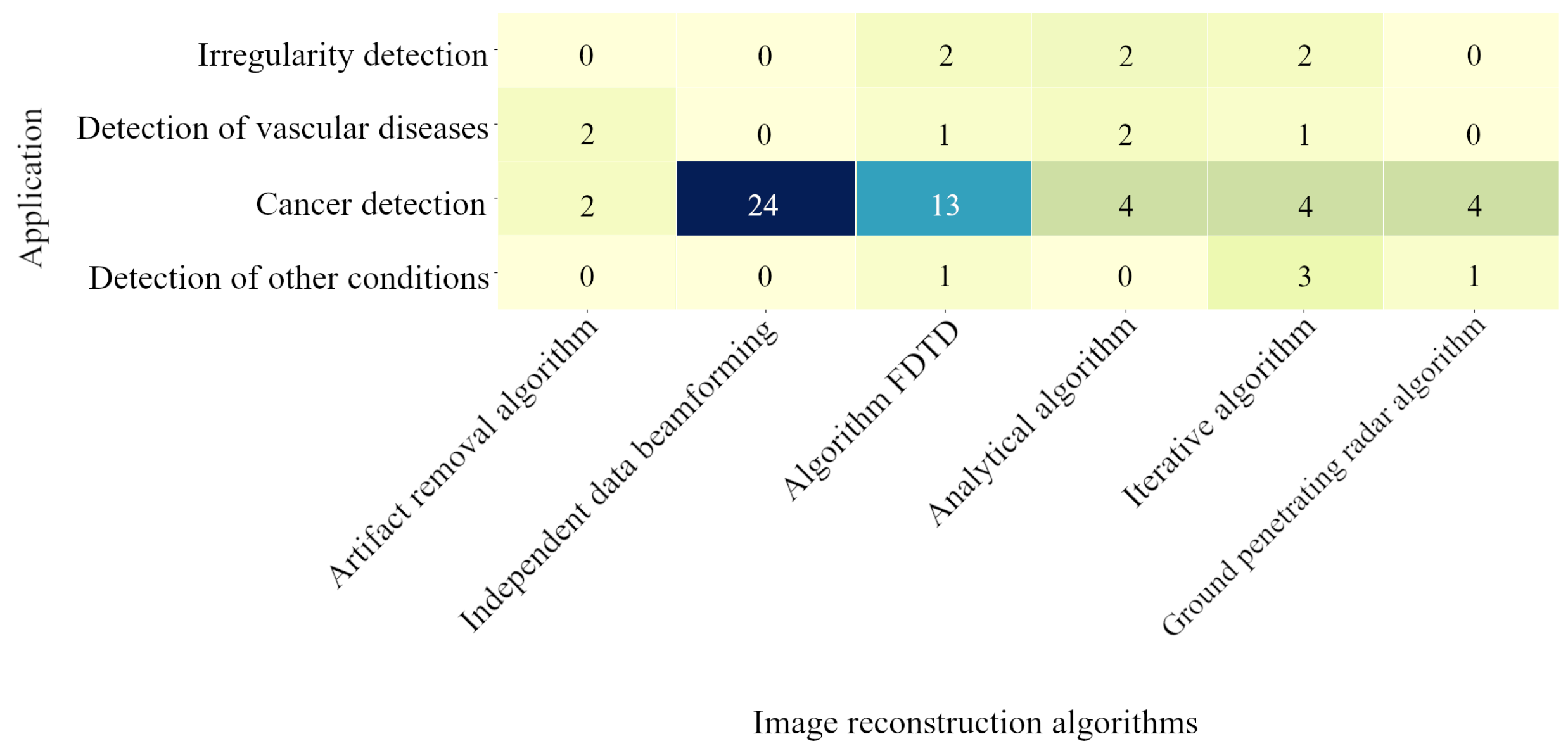

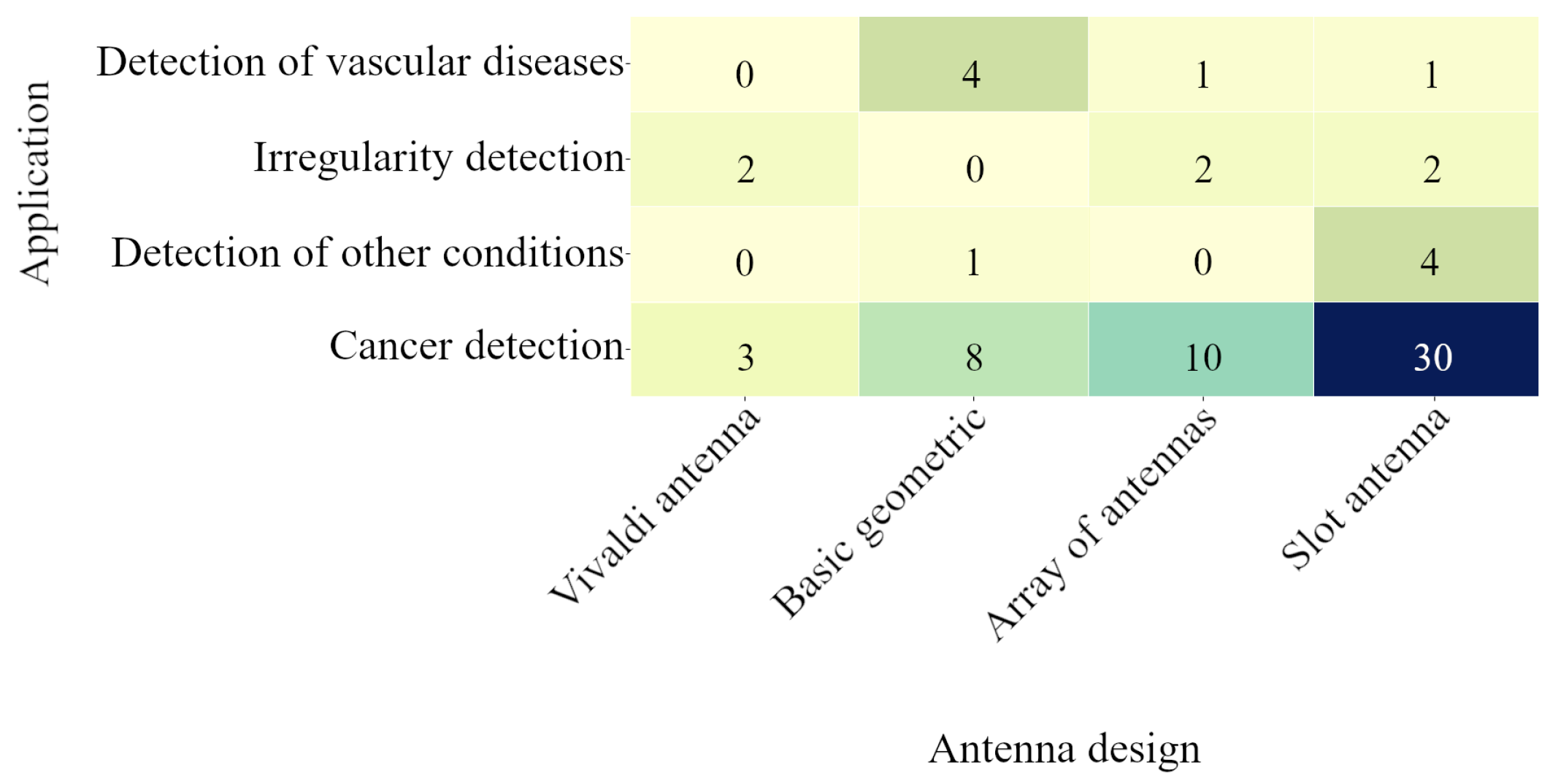
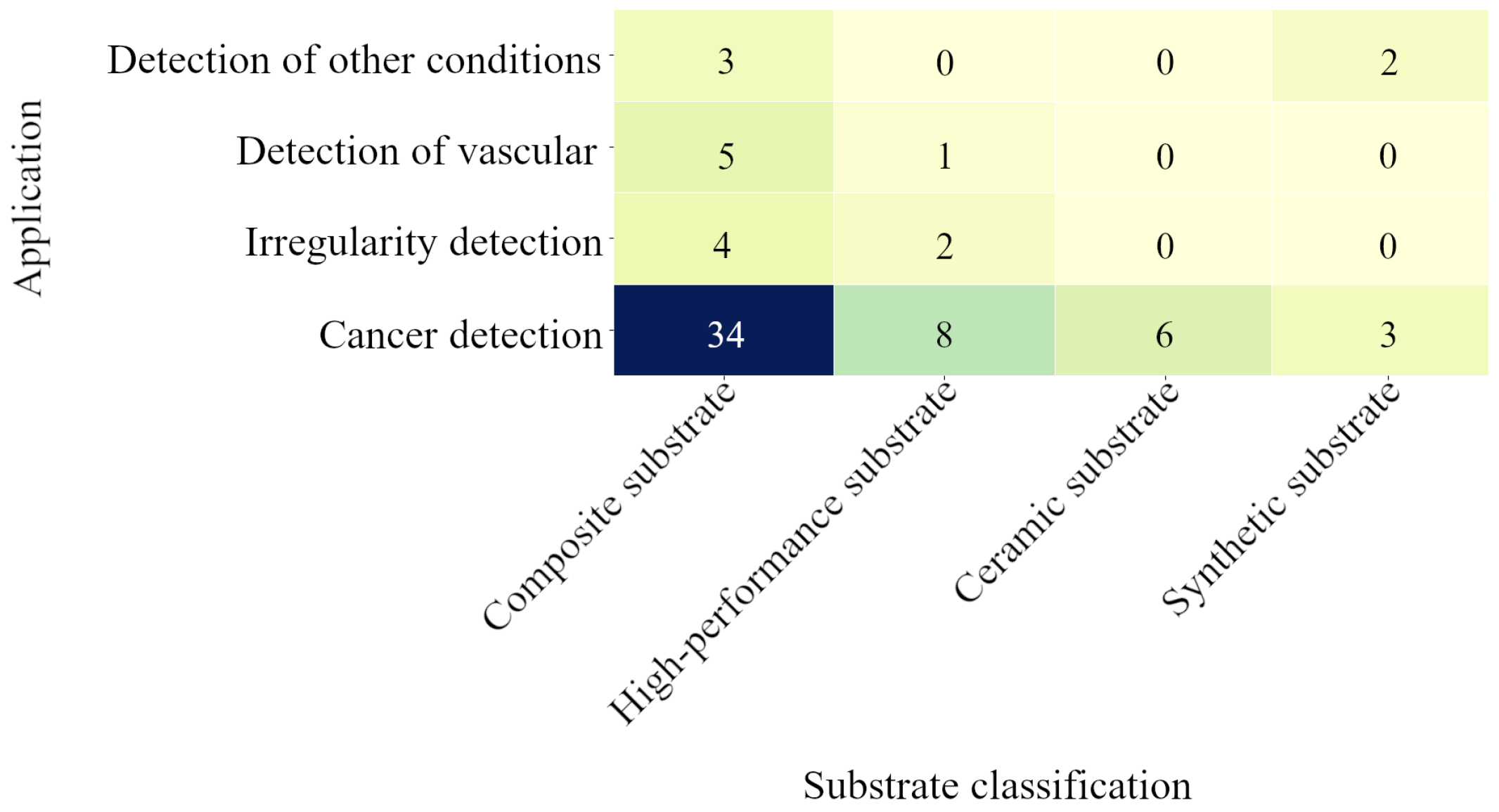
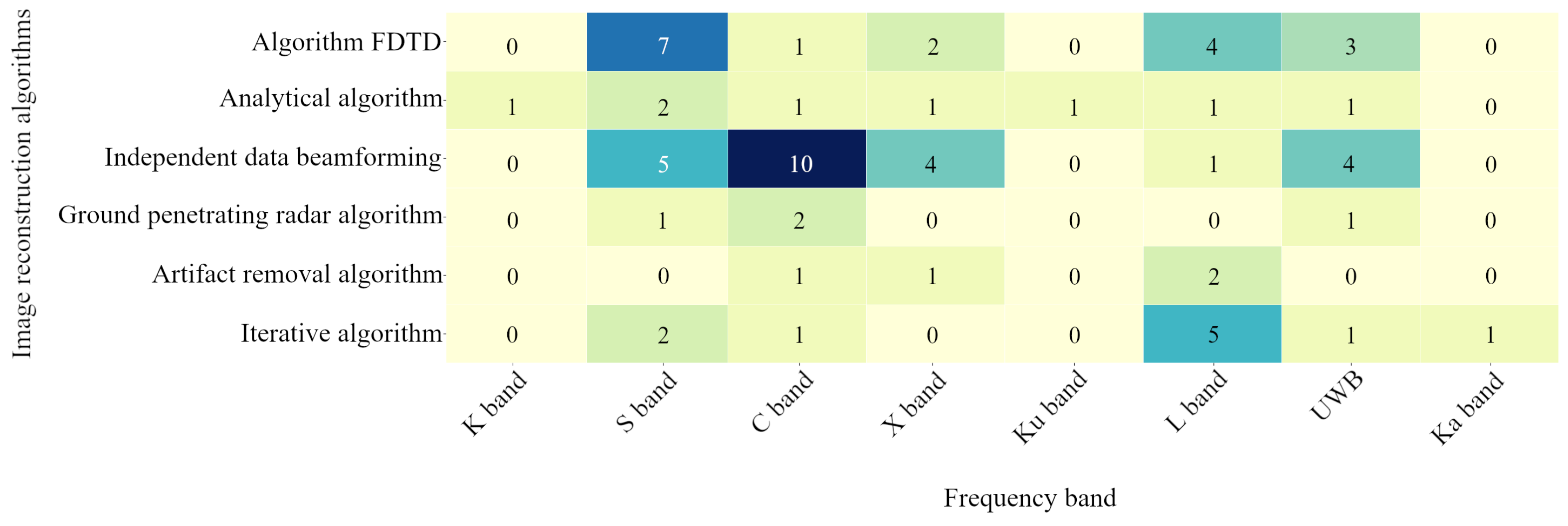

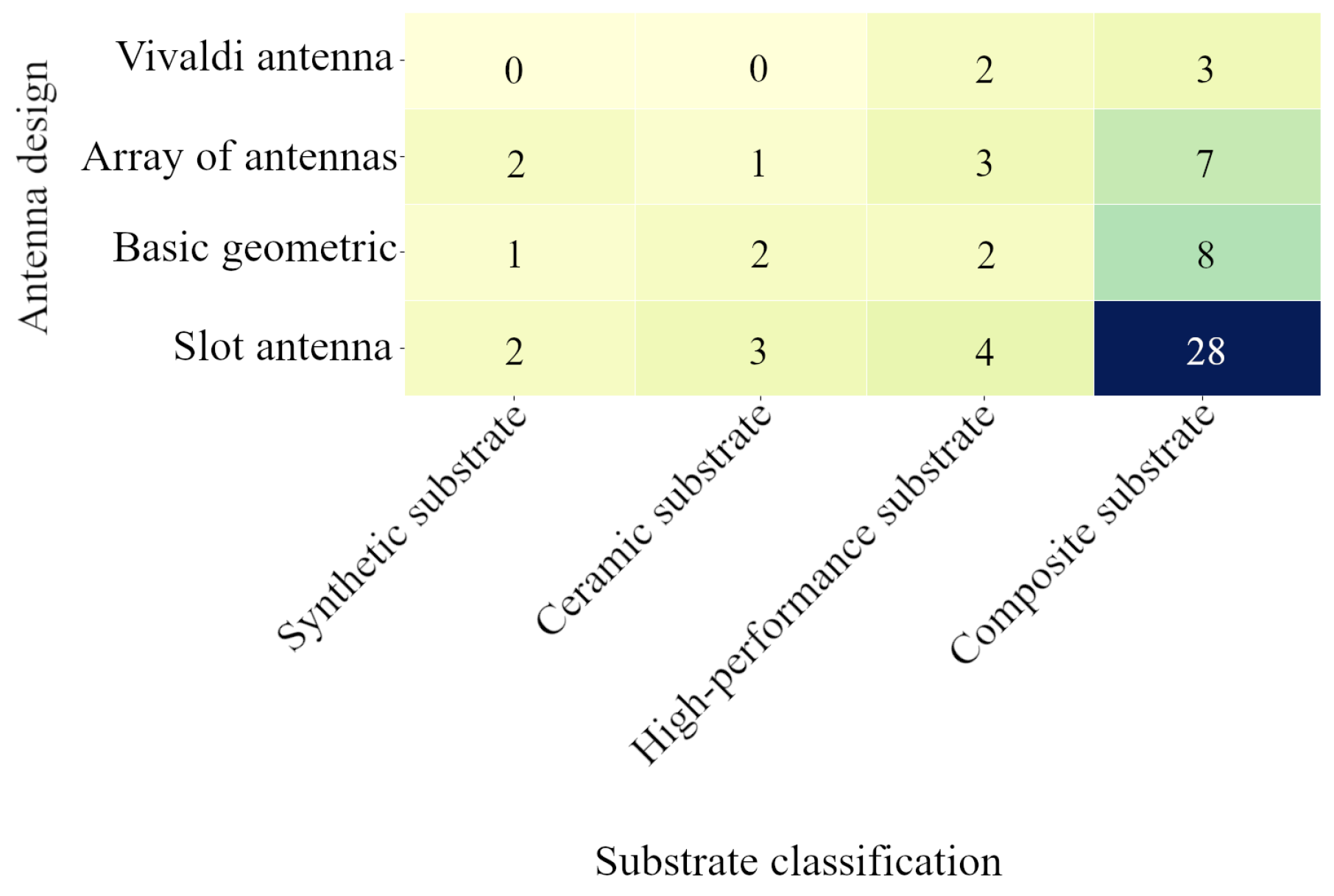



References
- Badyal, S.; Kumar, N. Suggesting Advance Methods for Obtaining Instantly Recognizable and Accurate Images. VIVECHAN Int. J. Res. 2014, 5, 55–61. [Google Scholar]
- Ahmed, S.S.; Schiessl, A.; Gumbmann, F.; Tiebout, M.; Methfessel, S.; Schmidt, L.P. Advanced microwave imaging. IEEE Microw. Mag. 2012, 13, 26–43. [Google Scholar] [CrossRef]
- Pozar, D.M. A Review of Aperture Coupled Microstrip Antennas: History, Operation, Development, and Applications; University of Massachusetts at Amherst: Amherst, MA, USA, 1996; pp. 1–9. [Google Scholar]
- Gupta, V.R.; Gupta, N. Characteristics of a compact microstrip antenna. Microw. Opt. Technol. Lett. 2004, 40, 158–160. [Google Scholar] [CrossRef]
- James, J.R.; Hall, P.S.; Wood, C. Microstrip Antenna: Theory and Design; IET: London, UK, 1986; Volume 12. [Google Scholar]
- Liu, Y.; Si, L.M.; Wei, M.; Yan, P.; Yang, P.; Lu, H.; Zheng, C.; Yuan, Y.; Mou, J.; Lv, X.; et al. Some recent developments of microstrip antenna. Int. J. Antennas Propag. 2012, 2012, 428284. [Google Scholar] [CrossRef]
- Singh, I.; Tripathi, V.S. Micro strip patch antenna and its applications: A survey. Int. J. Comp. Tech. Appl. 2011, 2, 1595–1599. [Google Scholar]
- Yang, F.; Rahmat-Samii, Y. Patch antennas with switchable slots (PASS) in wireless communications: Concepts, designs, and applications. IEEE Antennas Propag. Mag. 2005, 47, 13–29. [Google Scholar] [CrossRef]
- Shi, J.; Liu, S.; Zhang, L.; Yang, B.; Shu, L.; Yang, Y.; Ren, M.; Wang, Y.; Chen, J.; Chen, W.; et al. Smart textile-integrated microelectronic systems for wearable applications. Adv. Mater. 2020, 32, 1901958. [Google Scholar] [CrossRef]
- Ding, X.; Clifton, D.; Ji, N.; Lovell, N.H.; Bonato, P.; Chen, W.; Yu, X.; Xue, Z.; Xiang, T.; Long, X.; et al. Wearable sensing and telehealth technology with potential applications in the coronavirus pandemic. IEEE Rev. Biomed. Eng. 2020, 14, 48–70. [Google Scholar] [CrossRef] [PubMed]
- James, J.R.; Hall, P.S. Handbook of Microstrip Antennas; IET: London, UK, 1989; Volume 1. [Google Scholar]
- Nasimuddin, N. Microstrip Antennas; BoD–Books on Demand: Rijeka, Croatia, 2011. [Google Scholar]
- Lee, K.F.; Tong, K.F. Microstrip patch antennas—basic characteristics and some recent advances. Proc. IEEE 2012, 100, 2169–2180. [Google Scholar]
- Benavides, J.B.; Lituma, R.A.; Chasi, P.A.; Guerrero, L.F. A Novel Modified Hexagonal Shaped Fractal Antenna with Multi Band Notch Characteristics for UWB Applications. In Proceedings of the 2018 IEEE-APS Topical Conference on Antennas and Propagation in Wireless Communications (APWC), Cartagena, Colombia, 10–14 September 2018; pp. 830–833. [Google Scholar] [CrossRef]
- Guerrero-Vásquez, L.F.; Jara-Quito, T.A.; Ordoñez-Ordoñez, J.O.; Cevallos-Gonzalez, M.K.; Chasi-Pesantez, P.A. A Novel Multi Band Patch Antenna Based on Plotting Exponential Partial Sums in the Complex Plane. In Proceedings of the 2019 International Conference on Electromagnetics in Advanced Applications (ICEAA), Granada, Spain, 9–13 September 2019; pp. 869–872. [Google Scholar] [CrossRef]
- Bai, J.; Shi, S.; Prather, D.W. Modified compact antipodal Vivaldi antenna for 4–50-GHz UWB application. IEEE Trans. Microw. Theory Tech. 2011, 59, 1051–1057. [Google Scholar] [CrossRef]
- Burger, W.; Burge, M.J. Digital Image Processing: An Algorithmic Introduction; Springer Nature: Berlin/Heidelberg, Germany, 2022. [Google Scholar]
- Acharya, T.; Ray, A.K. Image Processing: Principles and Applications; John Wiley & Sons: Hoboken, NJ, USA, 2005. [Google Scholar]
- Nalam, M.; Rani, N.; Mohan, A. Biomedical application of microstrip patch antenna. Int. J. Innov. Sci. Mod. Eng. (IJISME) 2014, 2, 6–8. [Google Scholar]
- Dhawan, A.P. Medical Image Analysis; John Wiley & Sons: Hoboken, NJ, USA, 2011. [Google Scholar]
- Nag, A.; Kaur, A.; Mittal, D.; Sidhu, E. THz rectangular slitted microstrip patch antenna design for biomedical applications, security purposes & drug detection. In Proceedings of the 2016 International Conference on Automatic Control and Dynamic Optimization Techniques (ICACDOT), Pune, India, 9–10 September 2016; IEEE: Piscataway, NJ, USA, 2016; pp. 755–758. [Google Scholar]
- Dhakad, S.K.; Dwivedi, U.; Baudha, S.; Bhandari, T. A slotted microstrip antenna with fractal design for X-band based surveillance applications. Int. J. Control Theory Appl. 2017, 10, 6. [Google Scholar]
- Page, M.J.; McKenzie, J.E.; Bossuyt, P.M.; Boutron, I.; Hoffmann, T.C.; Mulrow, C.D.; Shamseer, L.; Tetzlaff, J.M.; Akl, E.A.; Brennan, S.E.; et al. The PRISMA 2020 statement: An updated guideline for reporting systematic reviews. Int. J. Surg. 2021, 88, 105906. [Google Scholar] [CrossRef]
- Reig, C.; Avila-Navarro, E. Printed antennas for sensor applications: A review. IEEE Sens. J. 2013, 14, 2406–2418. [Google Scholar] [CrossRef]
- Priya, A.; Kumar, A.; Chauhan, B. A review of textile and cloth fabric wearable antennas. Int. J. Comput. Appl. 2015, 116. [Google Scholar] [CrossRef]
- Mahmud, M.Z.; Islam, M.T.; Misran, N.; Almutairi, A.F.; Cho, M. Ultra-wideband (UWB) antenna sensor based microwave breast imaging: A review. Sensors 2018, 18, 2951. [Google Scholar] [CrossRef]
- Jumaat, H.; Ali, M.T.; Ping, K.H.; Faudzi, N.M.; Miswadi, N.; Yon, H. A review of frequency selection and antenna arrangement system for microwave imaging in early breast cancer detection. J. Phys. Conf. Ser. 2019, 1372, 012004. [Google Scholar] [CrossRef]
- Imani, M.; Gollub, J.; Yurduseven, O.; Diebold, A.; Boyarsky, M.; Fromenteze, T.; Pulido-Mancera, L.; Sleasman, T.; Smith, D.R. Review of Metasurface Antennas for Computational Microwave Imaging. IEEE Trans. Antennas Propag. 2020, 68, 1860–1875. [Google Scholar] [CrossRef]
- Arora, G.; Maman, P.; Sharma, A.; Verma, N.; Puri, V. Systemic overview of microstrip patch antenna’s for different biomedical applications. Adv. Pharm. Bull. 2021, 11, 439. [Google Scholar] [CrossRef]
- Bassi, M.; Caruso, M.; Khan, M.S.; Bevilacqua, A.; Capobianco, A.D.; Neviani, A. An Integrated Microwave Imaging Radar With Planar Antennas for Breast Cancer Detection. IEEE Trans. Microw. Theory Tech. 2013, 61, 2108–2118. [Google Scholar] [CrossRef]
- Stauffer, P.R.; Snow, B.W.; Rodrigues, D.B.; Salahi, S.; Oliveira, T.R.; Reudink, D.; Maccarini, P.F. Non-Invasive Measurement of Brain Temperature with Microwave Radiometry: Demonstration in a Head Phantom and Clinical Case. Neuroradiol. J. 2014, 27, 3–12. [Google Scholar] [CrossRef] [PubMed]
- Ahdi Rezaeieh, S.; Zamani, A.; Abbosh, A.M. 3-D Wideband Antenna for Head-Imaging System with Performance Verification in Brain Tumor Detection. IEEE Antennas Wirel. Propag. Lett. 2015, 14, 910–914. [Google Scholar] [CrossRef]
- Koutsoupidou, M.; Karanasiou, I.S.; Kakoyiannis, C.G.; Uzunoglu, N. Two multiband uniplanar antennas for microwave breast imaging. In Proceedings of the 2015 9th European Conference on Antennas and Propagation (EuCAP), Lisbon, Portugal, 13–17 April 2015. [Google Scholar]
- Herrmann, T.; Mallow, J.; Plaumann, M.; Luchtmann, M.; Stadler, J.; Mylius, J.; Brosch, M.; Bernarding, J. The Travelling-Wave Primate System: A New Solution for Magnetic Resonance Imaging of Macaque Monkeys at 7 Tesla Ultra-High Field. PLoS ONE 2015, 10, e0129371. [Google Scholar] [CrossRef]
- Alqallaf, A.K.; Dib, R.K.; Mahmoud, S.F. Microwave Imaging Using Synthetic Radar Scheme Processing for the Detection of Breast Tumors. J. Desing 2016, 31, 98–105. [Google Scholar]
- Chouiti, S.M.; Merad, L.; Meriah, S.M.; Raimundo, X.; Taleb-Ahmed, A. An Efficient Image Reconstruction Method for Breast Cancer Detection Using an Ultra-Wideband Microwave Imaging System. Electromagnetics 2016, 36, 225–235. [Google Scholar] [CrossRef]
- Singh, S.; Sahu, B.; Singh, S.P. Conformal microstrip slot antenna with an AMC reflector for hyperthermia. J. Electromagn. Waves Appl. 2016, 30, 1603–1619. [Google Scholar] [CrossRef]
- Akhter, Z.; Bn, A.; Akhtar, M.J. Hemisphere lens-loaded Vivaldi antenna for time domain microwave imaging of concealed objects. J. Electromagn. Waves Appl. 2016, 30, 1183–1197. [Google Scholar] [CrossRef]
- Rahman, A.; Islam, M.T.; Singh, M.J.; Kibria, S.; Akhtaruzzaman, M. Electromagnetic Performances Analysis of an Ultra-wideband and Flexible Material Antenna in Microwave Breast Imaging: To Implement A Wearable Medical Bra. Sci. Rep. 2016, 6, 38906. [Google Scholar] [CrossRef]
- Eltigani, F.M.; Yahya, M.A.A.; Osman, M.E. Microwave imaging system for early detection of breast cancer. In Proceedings of the 2017 International Conference on Communication, Control, Computing and Electronics Engineering (ICCCCEE), Khartoum, Sudan, 16–18 January 2017; pp. 1–5. [Google Scholar] [CrossRef]
- Qi, C.; Hillyard, P.; Al-Husseiny, A.; Patwari, N.; Durgin, G.D. On-Wall, Wide Bandwidth E-Shaped Patch Antenna for Improved Whole-Home Radio Tomography. IEEE J. Radio Freq. Identif. 2017, 1, 22–31. [Google Scholar] [CrossRef]
- Taleb, S.; Merad, L.; Meriah, S.M.; Chouiti, S.M.; Boussahla, M. Tumor detection by microwave radar imaging system. In Proceedings of the 2017 Seminar on Detection Systems Architectures and Technologies (DAT), Algiers, Algeria, 20–22 February 2017; pp. 1–5. [Google Scholar] [CrossRef]
- Raihan, R.; Bhuiyan, M.S.A.; Hasan, R.R.; Chowdhury, T.; Farhin, R. A wearable microstrip patch antenna for detecting brain cancer. In Proceedings of the 2017 IEEE 2nd International Conference on Signal and Image Processing (ICSIP), Singapore, 4–6 August 2017; pp. 432–436. [Google Scholar] [CrossRef]
- Inum, R.; Rana, M.M.; Shushama, K.N.; Quader, M.A. EBG Based Microstrip Patch Antenna for Brain Tumor Detection via Scattering Parameters in Microwave Imaging System. Int. J. Biomed. Imaging 2018, 2018, 1–12. [Google Scholar] [CrossRef]
- Mahmud, M.Z.; Islam, M.T.; Misran, N.; Kibria, S.; Samsuzzaman, M. Microwave Imaging for Breast Tumor Detection Using Uniplanar AMC Based CPW-Fed Microstrip Antenna. IEEE Access 2018, 6, 44763–44775. [Google Scholar] [CrossRef]
- Scapaticci, R.; Tobon, J.; Bellizzi, G.; Vipiana, F.; Crocco, L. Design and Numerical Characterization of a Low-Complexity Microwave Device for Brain Stroke Monitoring. IEEE Trans. Antennas Propag. 2018, 66, 7328–7338. [Google Scholar] [CrossRef]
- Subramanian, S.; Sundarambal, B.; Nirmal, D. Investigation on Simulation-Based Specific Absorption Rate in Ultra-Wideband Antenna for Breast Cancer Detection. IEEE Sens. J. 2018, 18, 10002–10009. [Google Scholar] [CrossRef]
- Islam, M.; Samsuzzaman, M.; Islam, M.; Kibria, S. Experimental Breast Phantom Imaging with Metamaterial-Inspired Nine-Antenna Sensor Array. Sensors 2018, 18, 4427. [Google Scholar] [CrossRef]
- Ullah, M.A.; Alam, T.; Alam, M.S.; Kibria, S.; Islam, M.T. A unidirectional 3D antenna for biomedical microwave imaging based detection of abnormality in human body. Microsyst. Technol. 2018, 24, 4991–4996. [Google Scholar] [CrossRef]
- Ahsan, S.; Guo, Z.; Miao, Z.; Sotiriou, I.; Koutsoupidou, M.; Kallos, E.; Palikaras, G.; Kosmas, P. Design and Experimental Validation of a Multiple-Frequency Microwave Tomography System Employing the DBIM-TwIST Algorithm. Sensors 2018, 18, 3491. [Google Scholar] [CrossRef] [PubMed]
- Avşar Aydin, E.; Kaya Keleş, M. UWB Rectangular Microstrip Patch Antenna Design in Matching Liquid and Evaluating the Classification Accuracy in Data Mining Using Random Forest Algorithm for Breast Cancer Detection with Microwave. J. Electr. Eng. Technol. 2019, 14, 2127–2136. [Google Scholar] [CrossRef]
- Rokunuzzaman, M.; Ahmed, A.; Baum, T.C.; Rowe, W.S.T. Compact 3-D Antenna for Medical Diagnosis of the Human Head. IEEE Trans. Antennas Propag. 2019, 67, 5093–5103. [Google Scholar] [CrossRef]
- Alqallaf, A.; Dib, R. Focused Synthetic Radar Imaging Approach for Multi-tumor Screening. J. Eng. Res. 2019, 7, 232–243. [Google Scholar]
- Islam, M.T.; Samsuzzaman, M.; Kibria, S.; Misran, N.; Islam, M.T. Metasurface Loaded High Gain Antenna based Microwave Imaging using Iteratively Corrected Delay Multiply and Sum Algorithm. Sci. Rep. 2019, 9, 17317. [Google Scholar] [CrossRef]
- Ojaroudi, M.; Bila, S.; Salimi, M. A Novel Approach of Brain Tumor Detection using Miniaturized High-Fidelity UWB Slot Antenna Array. In Proceedings of the 13th European Conference on Antennas and Propagation (EuCAP), Krakow, Poland, 31 March–5 April 2019. [Google Scholar]
- Hammouch, N.; Ammor, H. Microwave Imaging for Early Breast Cancer Detection using CMI. In Proceedings of the 2019 7th Mediterranean Congress of Telecommunications (CMT), Fès, Morocco, 24–25 October 2019; pp. 1–5. [Google Scholar] [CrossRef]
- Geetharamani, G.; Aathmanesan, T. Metamaterial inspired THz antenna for breast cancer detection. SN Appl. Sci. 2019, 1, 595. [Google Scholar] [CrossRef]
- Islam, M.T.; Mahmud, M.Z.; Islam, M.T.; Kibria, S.; Samsuzzaman, M. A Low Cost and Portable Microwave Imaging System for Breast Tumor Detection Using UWB Directional Antenna array. Sci. Rep. 2019, 9, 15491. [Google Scholar] [CrossRef] [PubMed]
- Nazeri, A.; Abdolali, A.; Mehdi, M. An Extremely Safe Low-SAR Antenna with Study of Its Electromagnetic Biological Effects on Human Head. Wirel. Pers. Commun. 2019, 109, 1449–1462. [Google Scholar] [CrossRef]
- Mehranpour, M.; Jarchi, S.; Keshtkar, A.; Ghorbani, A.; Araghi, A.; Yurduseven, O.; Khalily, M. Robust Breast Cancer Imaging Based on a Hybrid Artifact Suppression Method for Early-Stage Tumor Detection. IEEE Access 2020, 8, 206790–206805. [Google Scholar] [CrossRef]
- Lin, X.; Chen, Y.; Gong, Z.; Seet, B.C.; Huang, L.; Lu, Y. Ultrawideband Textile Antenna for Wearable Microwave Medical Imaging Applications. IEEE Trans. Antennas Propag. 2020, 68, 4238–4249. [Google Scholar] [CrossRef]
- Hossain, A.; Islam, M.T.; Islam, M.T.; Chowdhury, M.E.H.; Rmili, H.; Samsuzzaman, M. A Planar Ultrawideband Patch Antenna Array for Microwave Breast Tumor Detection. Materials 2020, 13, 4918. [Google Scholar] [CrossRef]
- Kaur, G.; Kaur, A. Breast tissue tumor detection using “S” parameter analysis with an UWB stacked aperture coupled microstrip patch antenna having a “+” shaped defected ground structure. Int. J. Microw. Wirel. Technol. 2020, 12, 635–651. [Google Scholar] [CrossRef]
- Talukder, M.S.; Samsuzzaman, M.; Hasan, M.M.; Islam, M.T.; Azim, R.; Sahar, N.M. Multiple Rectangular Slotted Elliptical Shaped Patch Antenna For Microwave-Based Head Imaging. In Proceedings of the 2020 IEEE International Women in Engineering (WIE) Conference on Electrical and Computer Engineering (WIECON-ECE), Bhubaneswar, India, 26–27 December 2020; pp. 263–266. [Google Scholar] [CrossRef]
- Gopikrishnan, G.; Akhter, Z.; Bhadouria, V.S.; Akhtar, M.J. Microwave imaging of hidden crevasse in glacier terrain using metamaterial loaded eight-slot Vivaldi antenna. J. Electromagn. Waves Appl. 2020, 34, 259–274. [Google Scholar] [CrossRef]
- Sohani, B.; Khalesi, B.; Ghavami, N.; Ghavami, M.; Dudley, S.; Rahmani, A.; Tiberi, G. Detection of haemorrhagic stroke in simulation and realistic 3-D human head phantom using microwave imaging. Biomed. Signal Process. Control 2020, 61, 102001. [Google Scholar] [CrossRef]
- Rezaei, M.; Zamani, H.; Fakharzadeh, M.; Memarian, M. Quality Improvement of Millimeter-Wave Imaging Systems Using Optimized Dual Polarized Arrays. IEEE Trans. Antennas Propag. 2021, 69, 6848–6856. [Google Scholar] [CrossRef]
- Samsuzzaman, M.; Fakeeh, K.A.; Talukder, M.S.; Hasan, M.M.; Rahman, M.H.; Alam, M.M.; Shaik, M.S.; Islam, M.T. A double hollow rectangular-shaped patch and with the slotted ground plane monopole wideband antenna for microwave head imaging applications. Int. J. Commun. Syst. 2021, 34, e4958. [Google Scholar] [CrossRef]
- Selvaraj, V.; Baskaran, D.; Rao, P.; Srinivasan, P.; Krishnan, R. Breast Tissue Tumor Analysis Using Wideband Antenna and Microwave Scattering. IETE J. Res. 2021, 67, 49–59. [Google Scholar] [CrossRef]
- Razzicchia, E.; Lu, P.; Guo, W.; Karadima, O.; Sotiriou, I.; Ghavami, N.; Kallos, E.; Palikaras, G.; Kosmas, P. Metasurface-Enhanced Antennas for Microwave Brain Imaging. Diagnostics 2021, 11, 424. [Google Scholar] [CrossRef] [PubMed]
- Talukder, M.S.; Samsuzzaman, M.; Islam, M.T.; Azim, R.; Mahmud, M.Z.; Islam, M.T. Compact ellipse shaped patch with ground slotted broadband monopole patch antenna for head imaging applications. Chin. J. Phys. 2021, 72, 310–326. [Google Scholar] [CrossRef]
- Kaur, K.; Kaur, A. In vitro detection of skin cancer using an UWB stacked micro strip patch antenna with microwave imaging. Int. J. RF Microw. Comput.-Aided Eng. 2022, 32, e23407. [Google Scholar] [CrossRef]
- Mehedi, I.M.; Rao, K.P.; Al-Saggaf, U.M.; Alkanfery, H.M.; Bettayeb, M.; Jannat, R. Intelligent Tomographic Microwave Imaging for Breast Tumor Localization. Math. Probl. Eng. 2022, 2022, 4090351. [Google Scholar] [CrossRef]
- Naghavi, A.H.; Hassani, H.R.; Oloumi, D. Investigation and Analysis of EM Pulse Propagation Inside Human Head for High-Resolution UWB Elliptical SAR Imaging. IEEE J. Electromagn. RF Microwaves Med. Biol. 2022, 6, 485–493. [Google Scholar] [CrossRef]
- Hamza, M.N.; Abdulkarim, Y.I.; Saeed, S.R.; Altıntaş, O.; Mahmud, R.H.; Appasani, B.; Ravariu, C. Low-Cost Antenna-Array-Based Metamaterials for Non-Invasive Early-Stage Breast Tumor Detection in the Human Body. Biosensors 2022, 12, 828. [Google Scholar] [CrossRef]
- Asok, A.O.; Gokul Nath, S.J.; Vidhya, S.J.; Kunju, N.; Dey, S. Brain Tumor Detection with Compact Monopole Antennas using Microwave Medical Imaging. In Proceedings of the 2022 IEEE Microwaves, Antennas, and Propagation Conference (MAPCON), Bangalore, India, 12–16 December 2022; pp. 439–443. [Google Scholar] [CrossRef]
- Mohamed Junaid, K.; Sheela, J.J.J.; Logeshwaran, M. Design and Analysis of Novel Face Shaped Microstrip Array Antenna of UWB for Early Breast Tumor Detection. In Proceedings of the 2022 Sixth International Conference on I-SMAC (IoT in Social, Mobile, Analytics and Cloud) (I-SMAC), Dharan, Nepal, 10–12 November 2022; pp. 424–429. [Google Scholar] [CrossRef]
- Jahan, I.; Faruk Noman, M.O.; Ahasan Kabir, M. Design of a Slotted Patch Circular Antenna Array for Breast Tumor Identification. In Proceedings of the 2022 4th International Conference on Sustainable Technologies for Industry 4.0 (STI), Dhaka, Bangladesh, 17–18 December 2022; pp. 1–6. [Google Scholar] [CrossRef]
- M, A.B.S.; K, N.K.; M, M.F.; Vasan S, M.S.S. Design of Microstrip Patch Antenna for the Detection of Malignant Tumor. In Proceedings of the 2022 4th International Conference on Inventive Research in Computing Applications (ICIRCA), Coimbatore, India, 21–23 September 2022; pp. 1–8. [Google Scholar] [CrossRef]
- Ara, A.; Sheikh, J.A.; Khan, U.R.; Ali, B.; Javeed, S. Fractal Antenna Design with Slotted Partial Ground For Breast Tumor Detection. In Proceedings of the 2022 5th International Conference on Multimedia, Signal Processing and Communication Technologies (IMPACT), Aligarh, India, 26–27 November 2022; pp. 1–6. [Google Scholar] [CrossRef]
- Subramanian, S.; Sundarambal, B.; Karthikeyini, C.; Bommi, R.M.; Jacintha, V. Investigation on SAR in Hexagonal Shape Monopole Ultra-Wideband Antenna to Identify Female Breast Cancer. In Proceedings of the 2022 6th International Conference on Devices, Circuits and Systems (ICDCS), Coimbatore, India, 21–22 April 2022; pp. 125–129. [Google Scholar] [CrossRef]
- Blanco-Angulo, C.; Martínez-Lozano, A.; Juan, C.G.; Gutiérrez-Mazón, R.; Arias-Rodríguez, J.; Ávila Navarro, E.; Sabater-Navarro, J.M. Validation of an RF Image System for Real-Time Tracking Neurosurgical Tools. Sensors 2022, 22, 3845. [Google Scholar] [CrossRef]
- Zerrad, F.e.; Taouzari, M.; Makroum, E.M.; El Aoufi, J.; Islam, M.T.; Özkaner, V.; Abdulkarim, Y.I.; Karaaslan, M. Multilayered metamaterials array antenna based on artificial magnetic conductor’s structure for the application diagnostic breast cancer detection with microwave imaging. Med. Eng. Phys. 2022, 99, 103737. [Google Scholar] [CrossRef]
- Talukder, M.S.; Alam, M.M.; Islam, M.T.; Moniruzzaman, M.; Azim, R.; Alharbi, A.G.; Khan, A.I.; Moinuddin, M.; Samsuzzaman, M. Rectangular slot with inner circular ring patch and partial ground plane based broadband monopole low SAR patch antenna for head imaging applications. Chin. J. Phys. 2022, 77, 250–268. [Google Scholar] [CrossRef]
- Alam, M.M.; Talukder, M.S.; Samsuzzaman, M.; Khan, A.I.; Kasim, N.; Mehedi, I.M.; Azim, R. W-shaped slot-loaded U-shaped low SAR patch antenna for microwave-based malignant tissue detection system. Chin. J. Phys. 2022, 77, 233–249. [Google Scholar] [CrossRef]
- Bhargava, D.; Rattanadecho, P. Microwave imaging of breast cancer: Simulation analysis of SAR and temperature in tumors for different age and type. Case Stud. Therm. Eng. 2022, 31, 101843. [Google Scholar] [CrossRef]
- Hossain, A.; Islam, M.T.; Beng, G.K.; Kashem, S.B.A.; Soliman, M.S.; Misran, N.; Chowdhury, M.E.H. Microwave brain imaging system to detect brain tumor using metamaterial loaded stacked antenna array. Sci. Rep. 2022, 12, 16478. [Google Scholar] [CrossRef] [PubMed]
- Sreelekshmi, S.; Sankar, S.P. Design and analysis of novel miniaturised triple band antenna for breast cancer detection. Microsyst. Technol. 2022, 28, 1715–1726. [Google Scholar] [CrossRef]
- Moussa, M.N.; Madi, M.A.; Kabalan, K.Y. Breast Tumor Detection, Sizing and Localization Using a 24-Element Antenna Array. IEEE J. Biomed. Health Inform. 2022, 26, 5109–5121. [Google Scholar] [CrossRef]
- Poorgholam-Khanjari, S.; Zarrabi, F.B. Dual-band THz antenna with SNG loads for biosensing and early skin cancer detection with Fano response: A numerical study. Proc. Inst. Mech. Eng. Part L J. Mater. Des. Appl. 2022, 236, 2326–2335. [Google Scholar] [CrossRef]
- Jamlos, M.A.; Jamlos, M.F.; Mustafa, W.A.; Othman, N.A.; Rohani, M.N.K.H.; Saidi, S.A.; Sarip, M.S.M.; Mohd Nawi, M.A.H. Reduced Graphene Oxide UWB Array Sensor: High Performance for Brain Tumor Imaging and Detection. Nanomaterials 2022, 13, 27. [Google Scholar] [CrossRef] [PubMed]
- Naghavi, A.H.; Hassani, H.R.; Oloumi, D. Improving the Probability of Stroke Detection inside the Human Head Using Wideband Polarimetric Synthetic Aperture Radar Imaging. Int. J. RF Microw. Comput.-Aided Eng. 2023, 2023, 5644220. [Google Scholar] [CrossRef]
- Zerrad, F.e.; Taouzari, M.; Makroum, E.M.; Aoufi, J.E.; Qanadli, S.D.; Karaaslan, M.; Al-Gburi, A.J.A.; Zakaria, Z. Microwave Imaging Approach for Breast Cancer Detection Using a Tapered Slot Antenna Loaded with Parasitic Components. Materials 2023, 16, 1496. [Google Scholar] [CrossRef]
- Grover, P.; Singh, H.S.; Kumar Sahu, S. Simulation Study of a Compact UWB Antenna for Detection of Breast Tumors using Microwave Imaging Technique. In Proceedings of the 2023 International Conference on Device Intelligence, Computing and Communication Technologies, (DICCT), Dehradun, India, 17–18 March 2023; pp. 150–154. [Google Scholar] [CrossRef]
- Grover, P.; Singh, H.S.; Sahu, S.K. Simulation Study of a Miniaturized UWB Antenna loaded with FSS Reflector for Breast Tumor Detection. In Proceedings of the 2023 International Conference on Recent Advances in Electrical, Electronics, Ubiquitous Communication, and Computational Intelligence (RAEEUCCI), Chennai, India, 19–21 April 2023; pp. 1–5. [Google Scholar] [CrossRef]
- Cicchetti, R.; Pisa, S.; Piuzzi, E.; Testa, O. A Double Fourier-Transform Imaging Algorithm for a 24 GHz FMCW Short-Range Radar. Sensors 2023, 23, 4119. [Google Scholar] [CrossRef]
- Samsuzzaman, M.; Siam Talukder, M.; Alqahtani, A.; Alharbi, A.G.; Azim, R.; Soliman, M.S.; Tariqul Islam, M. Circular slotted patch with defected grounded monopole patch antenna for microwave-based head imaging applications. Alex. Eng. J. 2023, 65, 41–57. [Google Scholar] [CrossRef]
- Yushchenko, V.; Edvabnik, V.; Gofman, O.; Duluba, T.; Legkii, V. Method of object image reconstruction using a circular antenna array. Optoelectron. Instrum. Data Process. 2020, 56, 614–622. [Google Scholar] [CrossRef]
- Dastres, R.; Soori, M. Advanced image processing systems. Int. J. Imagining Robot. 2021, 21, 27–44. [Google Scholar]
- Elahi, M.A. Confocal Microwave Imaging and Artifact Removal Algorithms for the Early Detection of Breast Cancer. Ph.D. Thesis, University of Galway, Galway, Ireland, 2018. [Google Scholar]
- Elahi, M.A.; O’Loughlin, D.; Lavoie, B.R.; Glavin, M.; Jones, E.; Fear, E.C.; O’Halloran, M. Evaluation of image reconstruction algorithms for confocal microwave imaging: Application to patient data. Sensors 2018, 18, 1678. [Google Scholar] [CrossRef] [PubMed]
- Mucci, R. A comparison of efficient beamforming algorithms. IEEE Trans. Acoust. Speech Signal Process. 1984, 32, 548–558. [Google Scholar] [CrossRef]
- O’Halloran, M.; Byrne, D.; Elahi, M.A.; Conceição, R.C.; Jones, E.; Glavin, M. Confocal Microwave Imaging. In An Introduction to Microwave Imaging for Breast Cancer Detection; Springer International Publishing: Cham, Switzerland, 2016; pp. 47–73. [Google Scholar]
- Karam, S.A.S.; O’Loughlin, D.; Asl, B.M. A novel sophisticated form of DMAS beamformer: Application to breast cancer detection. Biomed. Signal Process. Control 2022, 74, 103516. [Google Scholar]
- Lim, H.B.; Nhung, N.T.T.; Li, E.P.; Thang, N.D. Confocal microwave imaging for breast cancer detection: Delay-multiply-and-sum image reconstruction algorithm. IEEE Trans. Biomed. Eng. 2008, 55, 1697–1704. [Google Scholar]
- Byrne, D.; O’Halloran, M.; Glavin, M.; Jones, E. Data independent radar beamforming algorithms for breast cancer detection. Prog. Electromagn. Res. 2010, 107, 331–348. [Google Scholar] [CrossRef]
- Elahi, M.A.; Lavoie, B.; Porter, E.; Olavini, M.; Jones, E.; Fear, E.; O’Halloran, M. Comparison of radar-based microwave imaging algorithms applied to experimental breast phantoms. In Proceedings of the 2017 XXXIInd General Assembly and Scientific Symposium of the International Union of Radio Science (URSI GASS), Montreal, QC, Canada, 19–26 August 2017; IEEE: Piscataway, NJ, USA, 2017; pp. 1–4. [Google Scholar]
- Chouiti, S.M.; Merad, L.; Meriah, S.M.; Raimundo, X. Microwave imaging of embedded object using an enhanced image reconstruction algorithm. Telecommun. Radio Eng. 2015, 74. [Google Scholar] [CrossRef]
- Kolenderska, S.M.; Szkulmowski, M. Artefact-removal algorithms for Fourier domain quantum optical coherence tomography. Sci. Rep. 2021, 11, 18585. [Google Scholar] [CrossRef] [PubMed]
- Elahi, M.A.; Glavin, M.; Jones, E.; O’Halloran, M. Artifact removal algorithms for microwave imaging of the breast. Prog. Electromagn. Res. 2013, 141, 185–200. [Google Scholar] [CrossRef]
- Oufi, A.A. Computer Modeling Using The Finite-Difference Time-Domain (FDTD) Method for Electromagnetic Wave Propagation; The University of Maine: Orono, ME, USA, 2021. [Google Scholar]
- Nagel, J.R. The Finite-Difference Time-Domain (FDTD) Algorithm; Department of Electrical and Computer Engineering, University of Utah: Salt Lake City, UT, USA, 2010. [Google Scholar]
- Bruyant, P.P. Analytic and iterative reconstruction algorithms in SPECT. J. Nucl. Med. 2002, 43, 1343–1358. [Google Scholar] [PubMed]
- Defrise, M.; Gullberg, G.T. Image reconstruction. Phys. Med. Biol. 2006, 51, R139. [Google Scholar] [CrossRef]
- Messali, Z.; Chetih, N.; Serir, A.; Boudjelal, A. A Comparative Study of Analytical, Iterative and Bayesian Reconstruction Algorithms in Computed Tomography (CT). Int. J. Comput. Commun. Eng. 2012, 1, 222–226. [Google Scholar] [CrossRef]
- Desai, S.D.; Kulkarni, L. A quantitative comparative study of analytical and iterative reconstruction techniques. Int. J. Image Process. (IJIP) 2010, 4, 307. [Google Scholar]
- Geyer, L.L.; Schoepf, U.J.; Meinel, F.G.; Nance, J.W., Jr.; Bastarrika, G.; Leipsic, J.A.; Paul, N.S.; Rengo, M.; Laghi, A.; De Cecco, C.N. State of the art: Iterative CT reconstruction techniques. Radiology 2015, 276, 339–357. [Google Scholar] [CrossRef]
- Bertsekas, D.P.; Tsitsiklis, J.N. Some aspects of parallel and distributed iterative algorithms—A survey. Automatica 1991, 27, 3–21. [Google Scholar] [CrossRef]
- Schafer, R.W.; Mersereau, R.M.; Richards, M.A. Constrained iterative restoration algorithms. Proc. IEEE 1981, 69, 432–450. [Google Scholar] [CrossRef]
- Patino, M.; Fuentes, J.M.; Singh, S.; Hahn, P.F.; Sahani, D.V. Iterative reconstruction techniques in abdominopelvic CT: Technical concepts and clinical implementation. Am. J. Roentgenol. 2015, 205, W19–W31. [Google Scholar] [CrossRef]
- Wang, Y.; Yang, J.; Yin, W.; Zhang, Y. A new alternating minimization algorithm for total variation image reconstruction. SIAM J. Imaging Sci. 2008, 1, 248–272. [Google Scholar] [CrossRef]
- Tong, Z.; Gao, J.; Yuan, D. Advances of deep learning applications in ground-penetrating radar: A survey. Constr. Build. Mater. 2020, 258, 120371. [Google Scholar] [CrossRef]
- Li, S.; Gu, X.; Xu, X.; Xu, D.; Zhang, T.; Liu, Z.; Dong, Q. Detection of concealed cracks from ground penetrating radar images based on deep learning algorithm. Constr. Build. Mater. 2021, 273, 121949. [Google Scholar] [CrossRef]
- Kobashigawa, J.S.; Youn, H.s.; Iskander, M.F.; Yun, Z. Classification of buried targets using ground penetrating radar: Comparison between genetic programming and neural networks. IEEE Antennas Wirel. Propag. Lett. 2011, 10, 971–974. [Google Scholar] [CrossRef]
- Economou, N.; Benedetto, F.; Bano, M.; Tzanis, A.; Nyquist, J.; Sandmeier, K.J.; Cassidy, N. Advanced ground penetrating radar signal processing techniques. Signal Process. 2017, 132, 197–200. [Google Scholar] [CrossRef]
- Chen, H.D.; Tsao, Y.H. Low-profile PIFA array antennas for UHF band RFID tags mountable on metallic objects. IEEE Trans. Antennas Propag. 2010, 58, 1087–1092. [Google Scholar] [CrossRef]
- Grabssi, W.; Izza, S.; Azrar, A. Design and analysis of a microstrip patch antenna for medical applications. In Proceedings of the 2017 5th International Conference on Electrical Engineering-Boumerdes (ICEE-B), Boumerdes, Algeria, 29–31 October 2017; IEEE: Piscataway, NJ, USA, 2017; pp. 1–6. [Google Scholar]
- Guerrero-Vásquez, L.F.; López-Nores, M.; Pazos-Arias, J.J.; Robles-Bykbaev, V.E.; Bustamante-Cacao, K.C.; Jara-Quito, H.J.; Bravo-Torres, J.F.; Campoverde-Jara, P.X. Systematic Review of Technological Aids to Social Interaction in Autistic Spectrum Disorders from Transversal Perspectives: Psychology, Technology and Therapy. Rev. J. Autism Dev. Disord. 2022, 11, 459–488. [Google Scholar] [CrossRef]
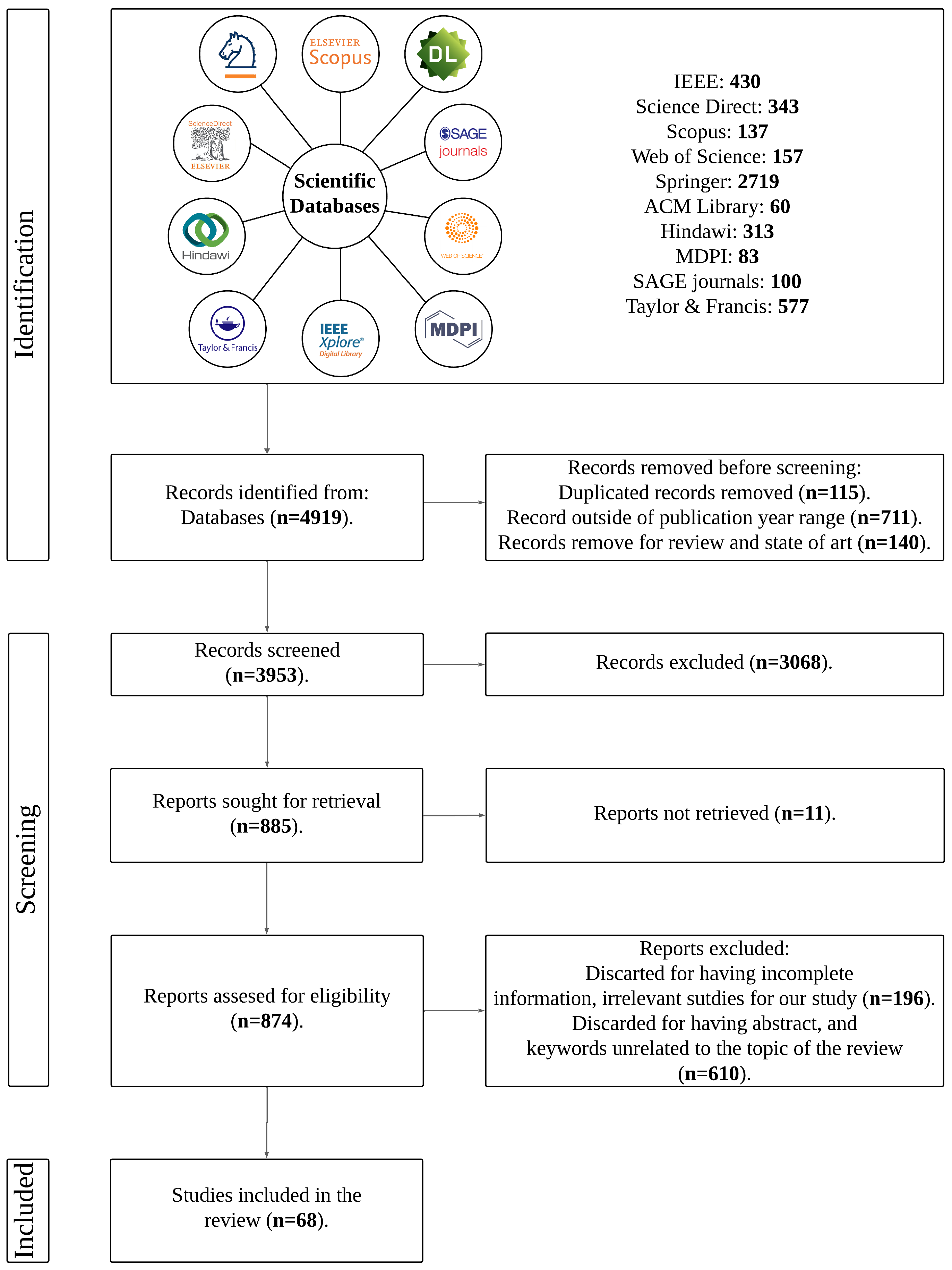
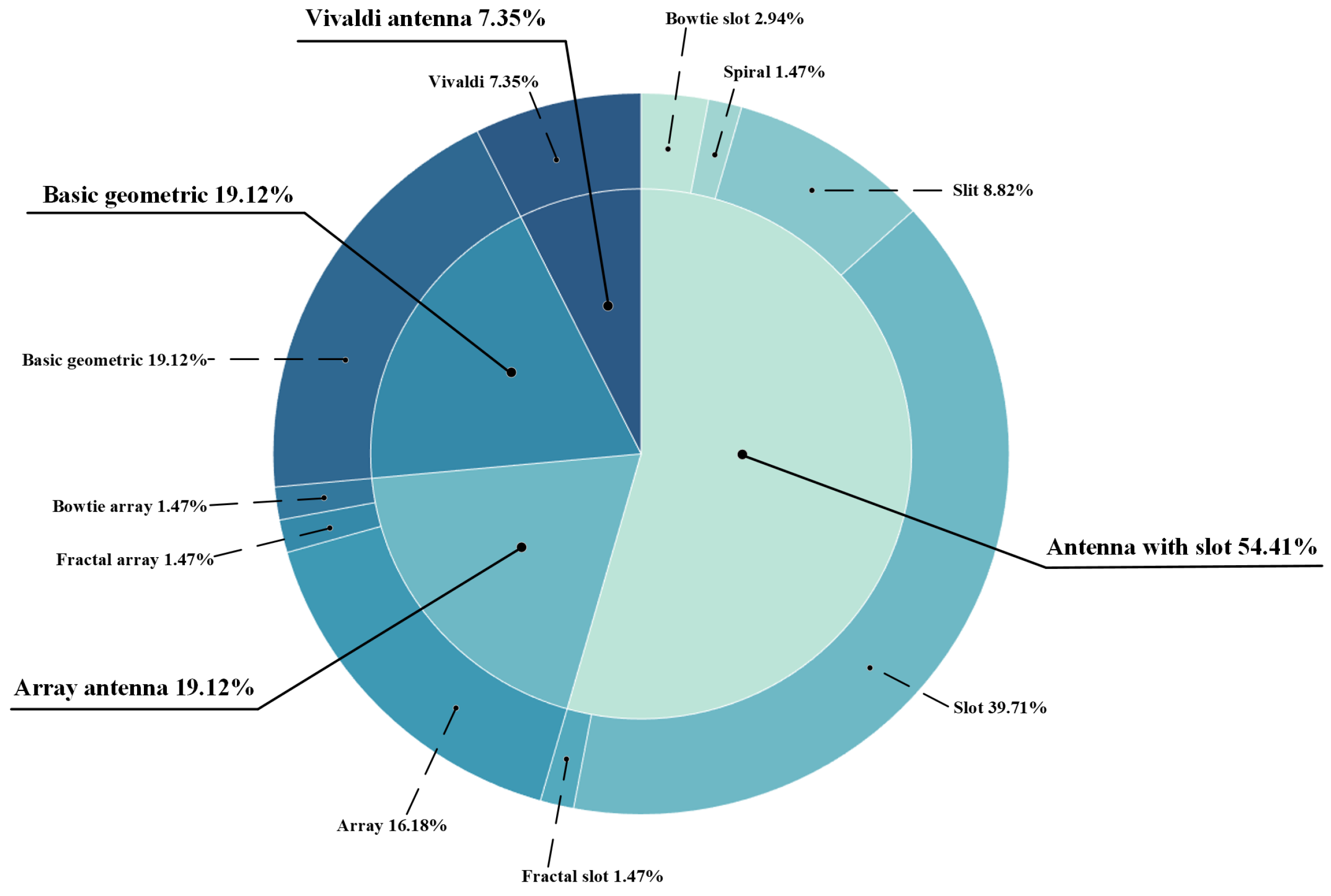
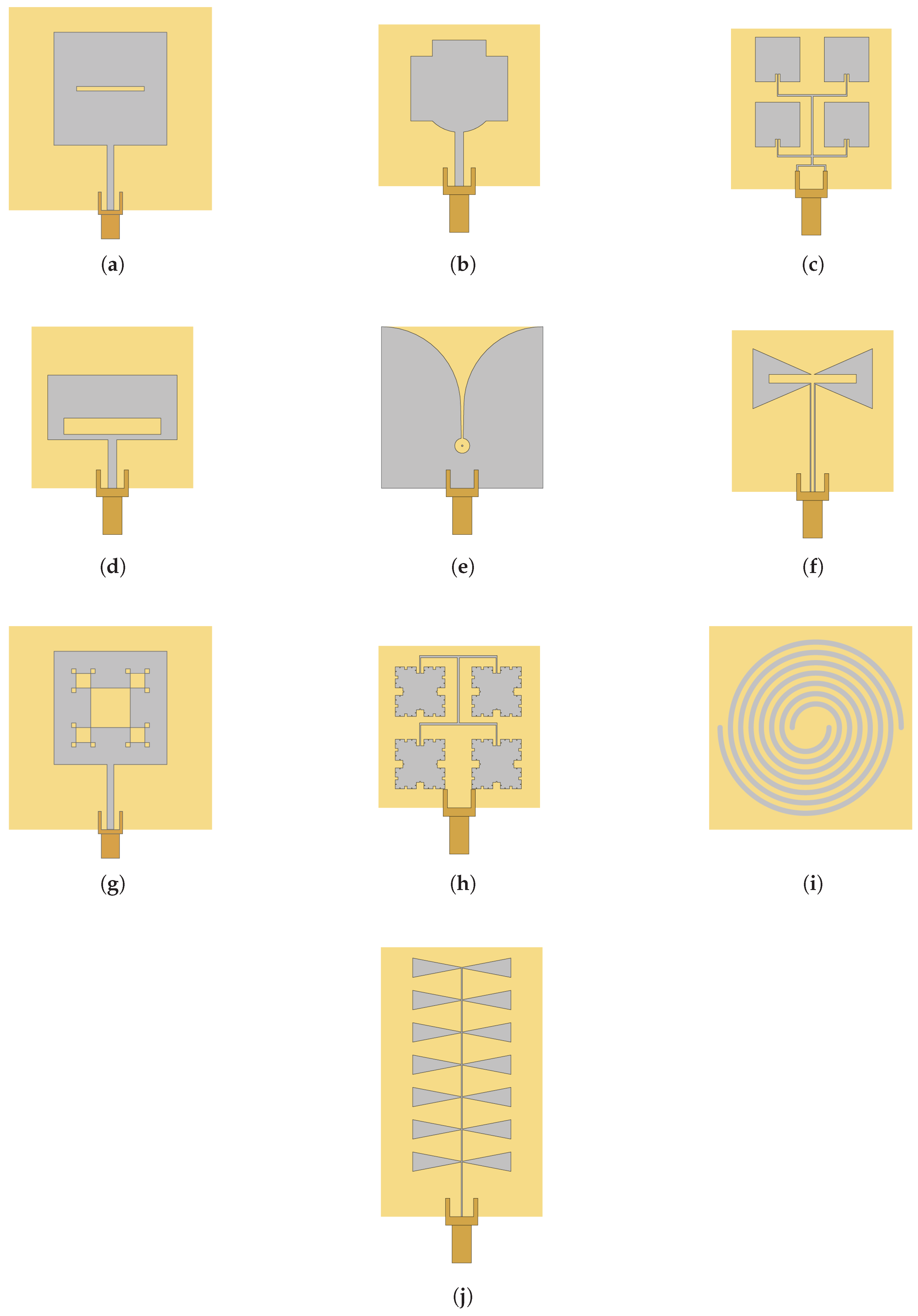
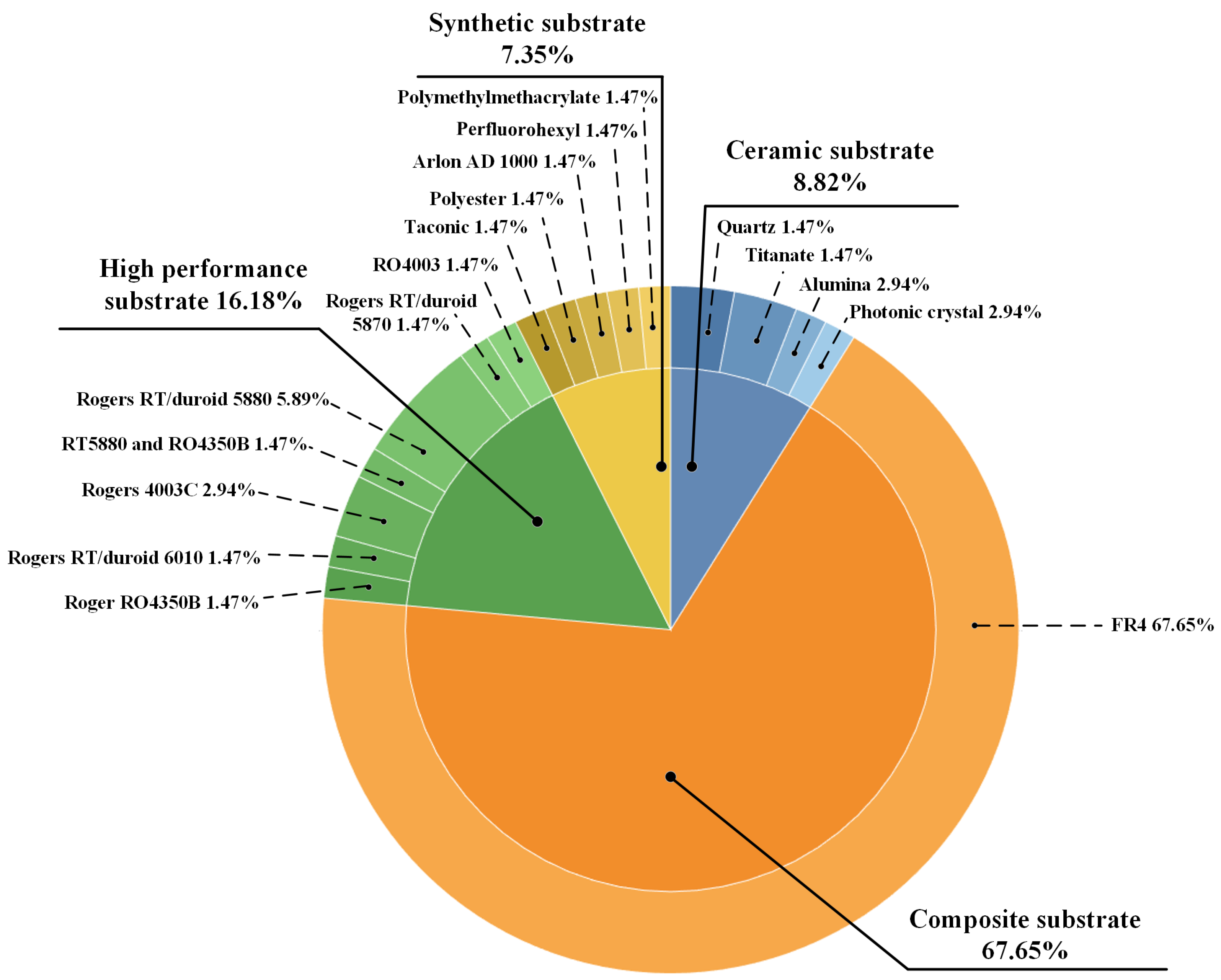
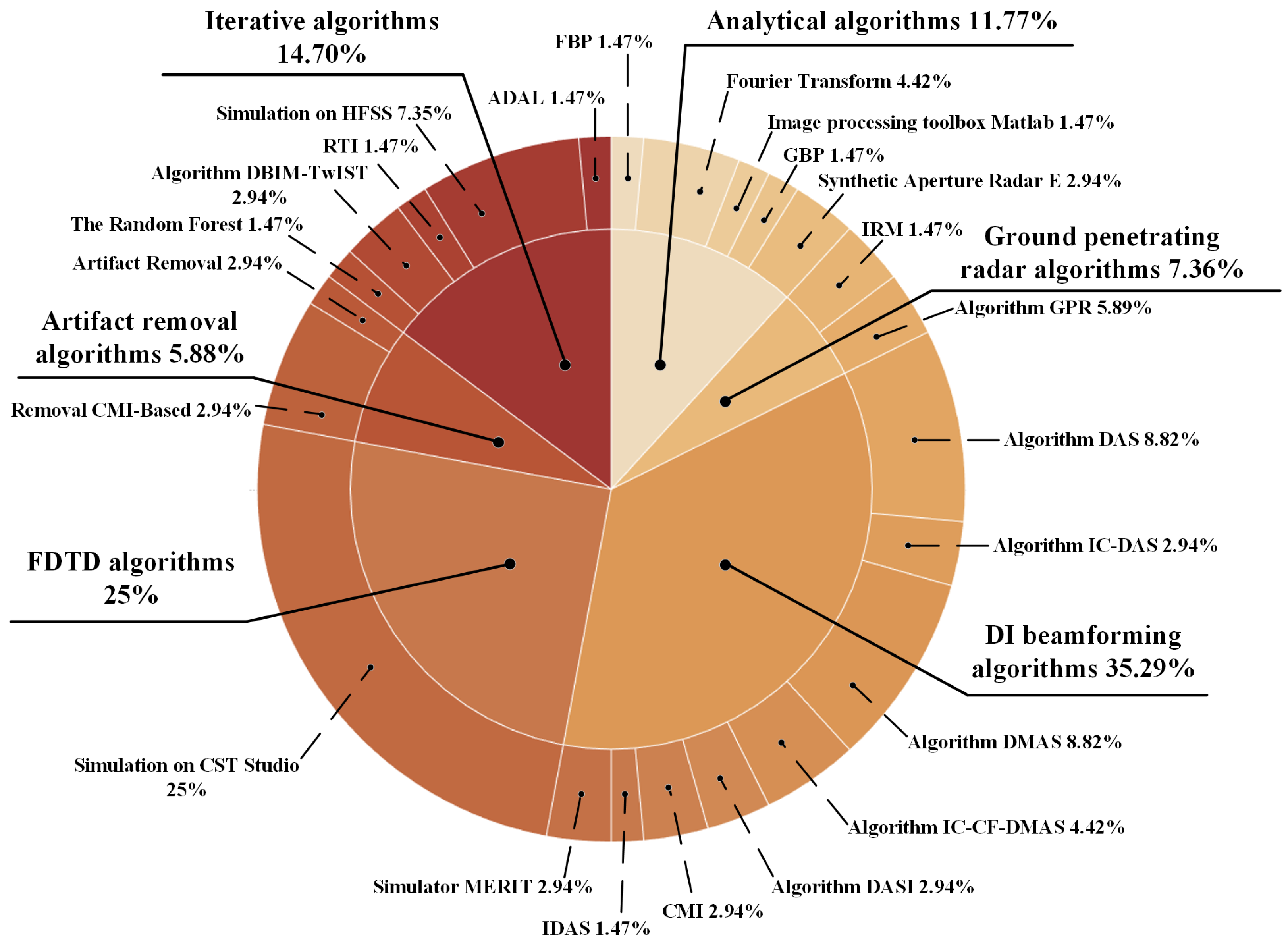

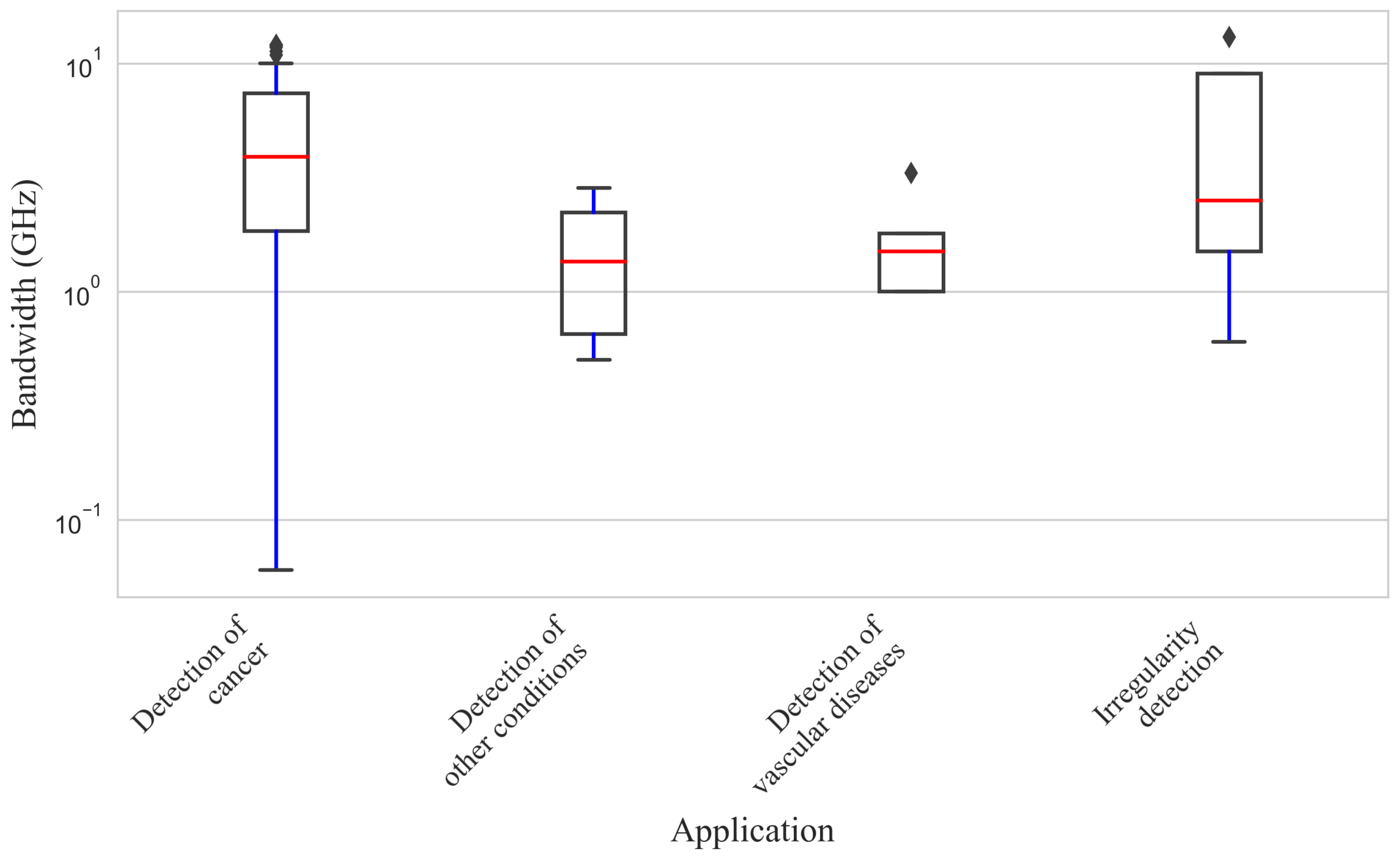
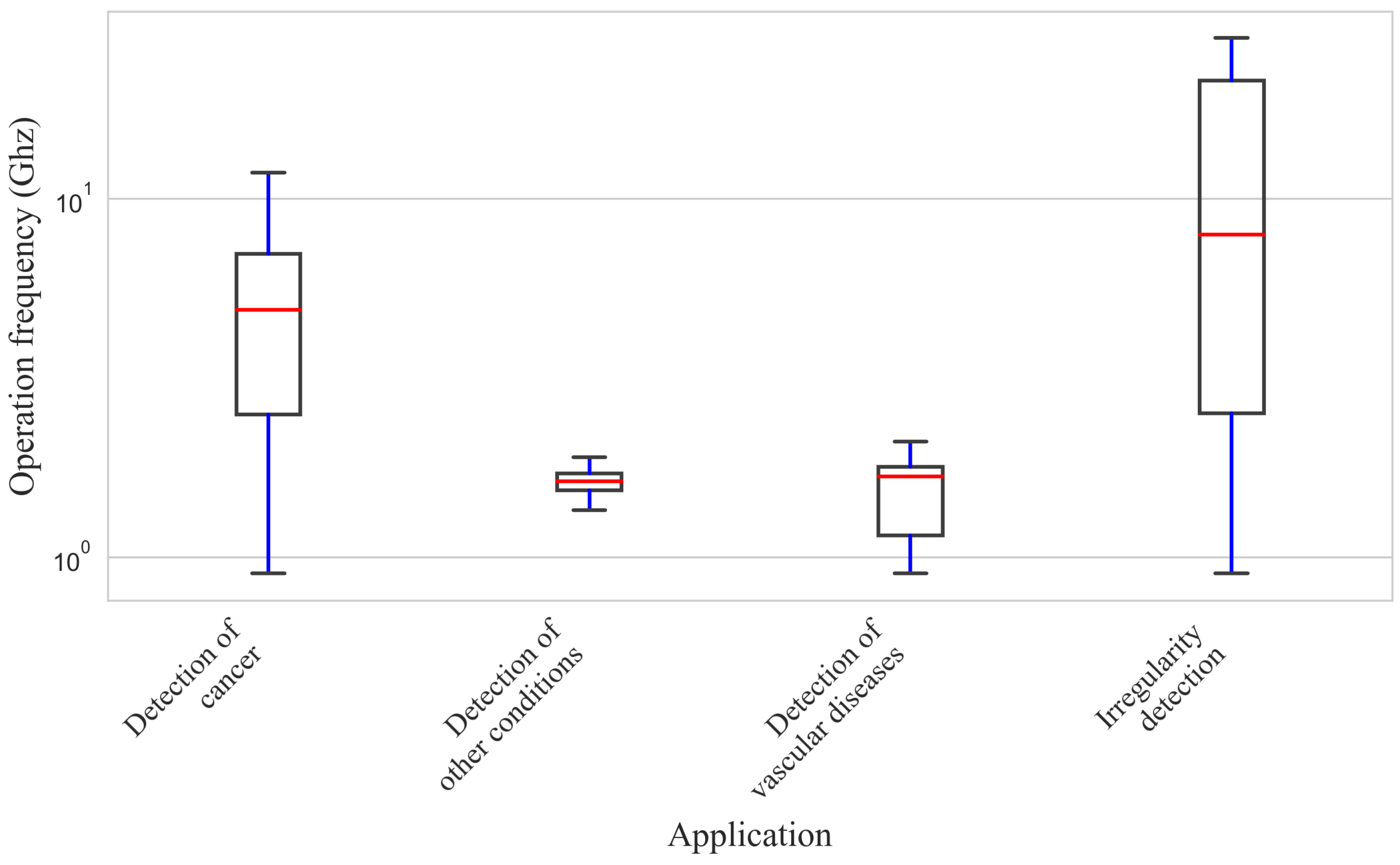
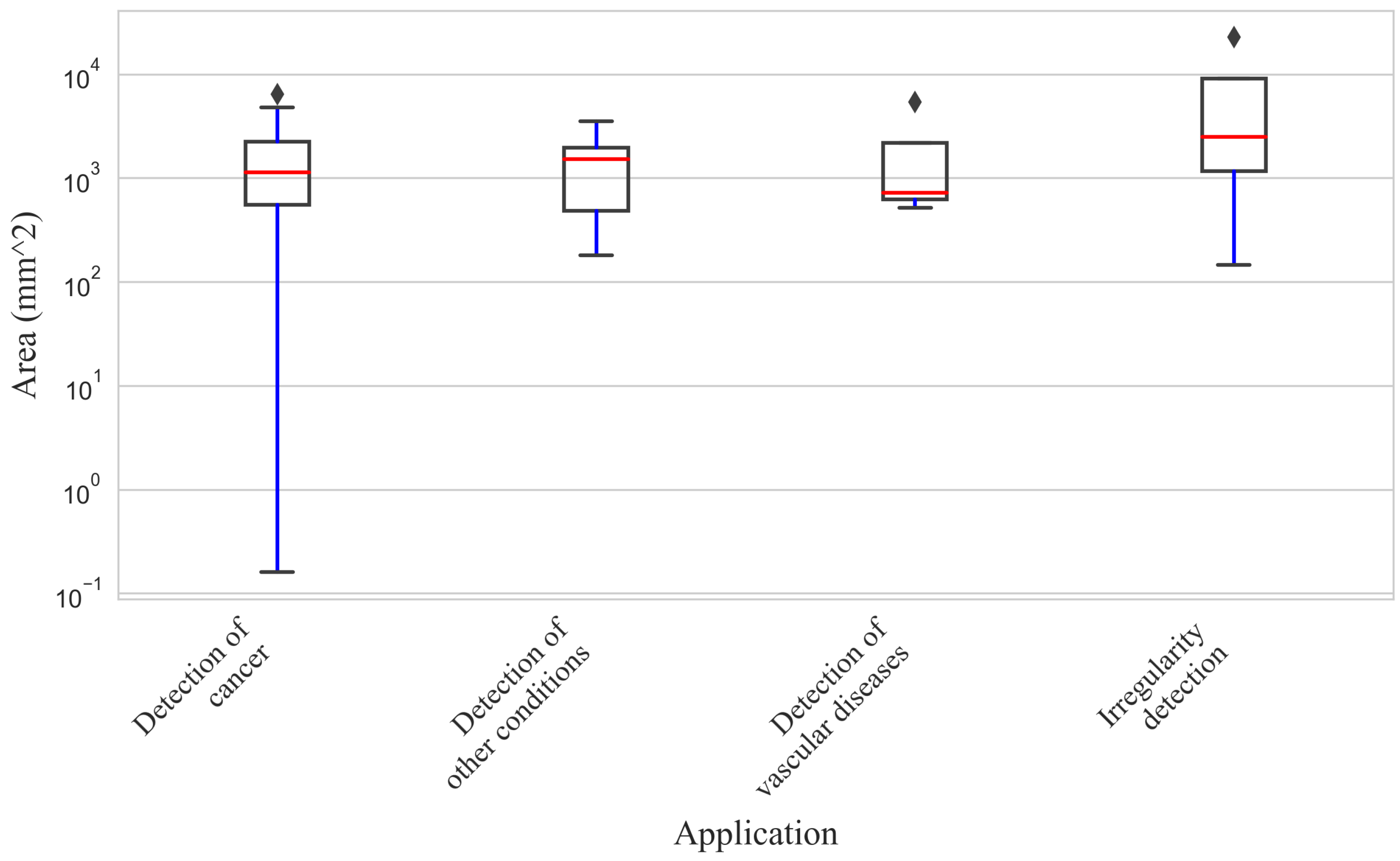
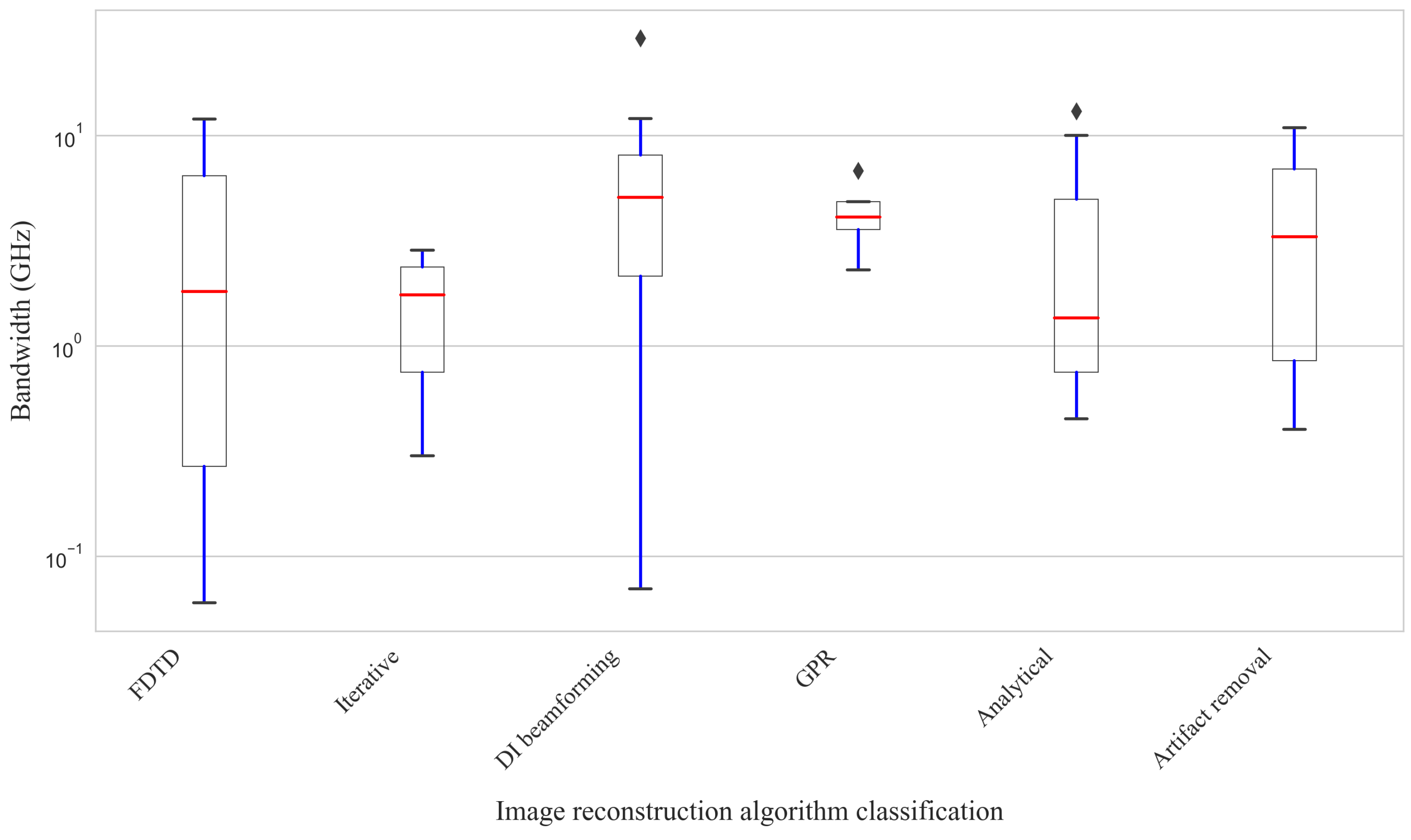
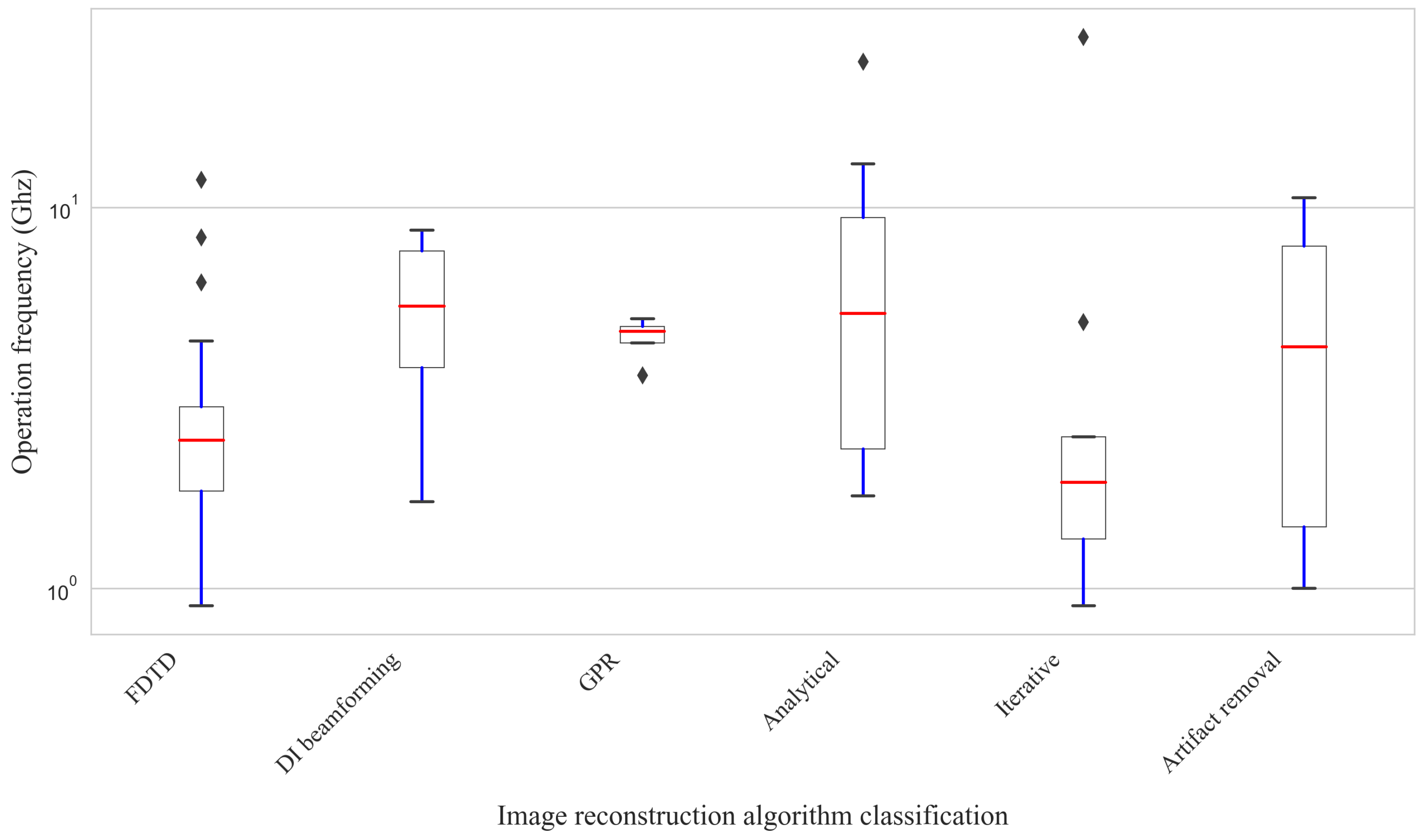


| Ref. | Approach | Methodology | Limitations |
|---|---|---|---|
| [24] | Review on the use of printed antennas in sensors. Applicability in telecommunications, biomedical devices, and environmental detection. | Review of scientific databases, classifying antennas based on their characteristics, materials, and applications. | Lack of experimental data in certain applications and the need for further studies on antenna miniaturization. |
| [25] | Review of textile-based wearable antennas, analyzing their design, applications in telecommunications, and biomedical monitoring. | Comparative study of wearable antennas reported in the literature, evaluating radiation efficiency, flexibility, and materials used. | High production cost and challenges in integrating flexible antennas into clothing without compromising electromagnetic performance. |
| [26] | Exploration of portable antennas used in body-centric communications, highlighting advantages and limitations. | Analysis of academic literature on advancements in wearable antennas, classified by material type, coupling efficiency, and body absorption level. | Limitations in transmission efficiency due to proximity to the human body, affecting antenna performance under various conditions. |
| [27] | Exploration of microwave-based imaging techniques applied to anomaly detection in biomedical structures and industrial materials. | Study of recent image reconstruction methods, comparing different microstrip antenna architectures and their effects on image quality. | Lack of experimental validation for some proposed models and reliance on computational simulations. |
| [28] | Review on the use of metasurface antennas in microwave image reconstruction, emphasizing computational techniques. | Analysis of recent literature on metasurface antennas, highlighting advances in imaging algorithms and improvements in antenna directivity. | Challenges in real-time reconstruction algorithm implementation and limitations in transmission efficiency. |
| [29] | Analysis of flexible and textile antennas used in biomedical applications and portable wireless communications. | Comparison of flexible antennas based on innovative materials, classified by radiation efficiency, flexibility, and adaptability to different environments. | High variability in electromagnetic response due to bending and compression of textile material. |
| Identifier | Author | Source | Year | Country |
|---|---|---|---|---|
| [30] | Bassi et al. | Web Of Science | 2013 | Italy |
| [31] | Stauffer et al. | SAGE | 2014 | United States |
| [32] | Rezaeieh et al. | Web Of Science | 2015 | Australia |
| [33] | Koutsoupidou et al. | IEEE | 2015 | Greece |
| [34] | Herrmann et al. | Scopus | 2015 | Germany |
| [35] | Alqallaf et al. | Web Of Science | 2016 | Kuwait |
| [36] | Mohammed et al. | Taylor and Francis | 2016 | Algeria |
| [37] | Singh et al. | Taylor and Francis | 2016 | India |
| [38] | Akhter et al. | Taylor and Francis | 2016 | India |
| [39] | Rahman et al. | Springer | 2016 | Malaysia |
| [40] | Eltigani et al. | IEEE | 2017 | Sudan |
| [41] | Qi et al. | IEEE | 2017 | United States |
| [42] | Taleb et al. | IEEE | 2017 | Algeria |
| [43] | Raihan et al. | IEEE | 2017 | Bangladesh |
| [44] | Inum et al. | Web Of Science | 2018 | Bangladesh |
| [45] | Mahmud et al. | Web Of Science | 2018 | Bangladesh |
| [46] | Scapaticci et al. | IEEE | 2018 | Italy |
| [47] | Subramanian et al. | IEEE | 2018 | India |
| [48] | Islam et al. | MDPI | 2018 | Malaysia |
| [49] | Ullah et al. | Springer | 2018 | Malaysia |
| [50] | Ahsan et al. | Scopus | 2018 | Basel |
| [51] | Aydin and Keles | Web Of Science | 2019 | Turkey |
| [52] | Rokunuzzaman et al. | Web Of Science | 2019 | Australia |
| [53] | Alqallaf and Dib | Web Of Science | 2019 | Kuwait |
| [54] | Islam et al. | Web Of Science | 2019 | Bangladesh |
| [55] | Ojaroudi et al. | IEEE | 2019 | France |
| [56] | Hammouch and Ammor | IEEE | 2019 | Morocco |
| [57] | Geetharamani and Aathmanesan | Springer | 2019 | India |
| [58] | Islam et al. | Springer | 2019 | Malaysia |
| [59] | Nazeri et al. | Springer | 2019 | Iran |
| [60] | Mehranpour et al. | Web Of Science | 2020 | Iran |
| [61] | Lin et al. | Web Of Science | 2020 | New Zealand |
| [62] | Hossain et al. | Web Of Science | 2020 | Malaysia |
| [63] | Kaur and Kaur | Web Of Science | 2020 | India |
| [64] | Talukder et al. | IEEE | 2020 | Bangladesh |
| [65] | Gopikrishnan et al. | Taylor and Francis | 2020 | India |
| [66] | Sohani et al. | ScienceDirect | 2020 | United Kingdom |
| [67] | Rezaei et al. | Web Of Science | 2021 | Iran |
| [68] | Samsuzzaman et al. | Web Of Science | 2021 | Bangladesh |
| [69] | Selvaraj et al. | Web Of Science | 2021 | India |
| [70] | Razzicchia et al. | MDPI | 2021 | United Kingdom |
| [71] | Talukder et al. | ScienceDirect | 2021 | Bangladesh |
| [72] | Kaur and Kaur | Hindawi | 2022 | India |
| [73] | Mehedi et al. | IEEE | 2022 | Saudi Arabia |
| [74] | Naghavi et al. | Web Of Science | 2022 | Iran |
| [75] | Hamza et al. | Web Of Science | 2022 | Iraq |
| [76] | Asok et al. | IEEE | 2022 | India |
| [77] | Mohamed et al. | IEEE | 2022 | India |
| [78] | Jahan et al. | IEEE | 2022 | Bangladesh |
| [79] | Vasan et al. | IEEE | 2022 | India |
| [80] | Ara et al. | IEEE | 2022 | India |
| [81] | Subramanian et al. | IEEE | 2022 | India |
| [82] | Blanco-Angulo | MDPI | 2022 | Spain |
| [83] | Zerrad et al. | ScienceDirect | 2022 | Morocco |
| [84] | Talukder et al. | ScienceDirect | 2022 | Bangladesh |
| [85] | Alam et al. | ScienceDirect | 2022 | Saudi Arabia |
| [86] | Bhargava and Rattanadecho | ScienceDirect | 2022 | Thailand |
| [87] | Hossain et al. | Springer | 2022 | Malaysia |
| [88] | Sreelekshmi and Sankar | Springer | 2022 | India |
| [89] | Moussa et al. | Scopus | 2022 | Lebanon |
| [90] | Poorgholam and Zarrab | SAGE | 2022 | France |
| [91] | Jamlos et al. | Web Of Science | 2023 | Malaysia |
| [92] | Naghavi et al. | Web Of Science | 2023 | Iran |
| [93] | Zerrad et al. | Web Of Science | 2023 | Morocco |
| [94] | Grover et al. | IEEE | 2023 | India |
| [95] | Grover et al. | IEEE | 2023 | India |
| [96] | Cicchetti et al. | MDPI | 2023 | Italy |
| [97] | Samsuzzaman et al. | ScienceDirect | 2023 | Bangladesh |
| Geometric Design | References |
|---|---|
| Slot | [32,34,36,37,42,43,45,47,52,59,60,61,63,64,68,69,71,75,76,83,84,85,86,90,93,95,97] |
| Basic geometric | [30,39,40,46,49,50,55,56,62,66,70,74,81] |
| Array | [33,44,48,67,77,78,87,88,91,94,96] |
| Slit | [41,51,57,72,73,79] |
| Vivaldi | [38,54,58,65,82] |
| Bowtie slot | [35,53] |
| Fractal slot | [80] |
| Fractal array | [89] |
| Spiral | [31] |
| Bowtie array | [92] |
| Substrates | References |
|---|---|
| FR4 | [31,32,36,38,41,43,44,45,46,47,48,50,51,52,53,55,56,59,62,63,64,65,66,68,69,71,72,73,74,75,76,77,78,79,80,81,82,83,84,85,86,89,92,94,95,97] |
| Rogers RT/Duroid 5880 | [37,54,70,93] |
| Alumina | [33,35] |
| Photonic crystal | [49,57] |
| Rogers 4003C | [30,67] |
| Arlon AD 1000 | [88] |
| Quartz | [90] |
| Perfluorohexyl | [39] |
| Polyester | [61] |
| Polymethylmethacrylate | [34] |
| RO4003 | [42] |
| Roger RO4350B | [96] |
| Rogers RT/duroid 6010 | [60] |
| Rogers RT5880 and RO4350B | [87] |
| Rogers RT/duroid 5870 | [58] |
| Taconic | [91] |
| Titanate | [40] |
| References | Substrates | Thickness (mm) | |
|---|---|---|---|
| [30] | Roger RO4003C | 3.55 | 1.524 |
| [31] | FR4 | 4.4 | 1.6 |
| [32] | FR4 | 4.4 | 1.6 |
| [33] | Alumina | 9.4 | 1.57 |
| [34] | Polymethylmethacrylate | 2.8–3.0 | 0.1–5 |
| [35] | Alumina | 4.0 | 0.1287 |
| [36] | FR4 | 3.34 | 0.794 |
| [37] | Rogers RT/Duroid 5880 | 2.2 | 0.508 |
| [38] | FR4 | 4.4 | 1.6 |
| [39] | Perfluorohexy | 2.64 | 1.6 |
| [40] | Titanate | 500–2000 | 1 |
| [41] | FR4 | 3.66 | 3.2 |
| [42] | RO4003 | 3.34 | 0.794 |
| [43] | FR4 | 4.35 | 0.8 |
| [44] | FR4 | 4.4 | 1.6 |
| [45] | FR4 | 4.6 | 1.6 |
| [46] | FR4 | 4.3 | 1.6 |
| [47] | FR4 | 4.4 | 1.6 |
| [48] | FR4 | 4.6 | 1.6 |
| [49] | Photonic crystal | 1 | 2 |
| [50] | FR4 | 4.4 | 1.6 |
| [51] | FR4 | 4.7 | 1.6 |
| [52] | FR4 | 4.3 | 1.6 |
| [53] | FR4 | 4.4 | 1.6 |
| [54] | Rogers RT/Duroid 5880 | 2.2 | 1.57 |
| [55] | FR4 | 4.4 | 0.8 |
| [56] | FR4 | 4.3 | 1.58 |
| [57] | Photonic crystal | 1–4 | 0.03–0.3 |
| [58] | Rogers RT/duroid 5870 | 2.33 | 1.57 |
| [59] | FR4 | 4.3 | 1.65 |
| [60] | Rogers RT/duroid 6010 | 9 | 1.27 |
| [61] | Polyester | 2.193 | 0.5 |
| [62] | FR4 | 4.4 | 1.6 |
| [63] | FR4 | 4.4 | 1.57 |
| [64] | FR4 | 4.3 | 1.6 |
| [65] | FR4 | 4.3 | 1 |
| [66] | FR4 | 4.7 | 1.6 |
| [67] | Rogers 4003C | 3.6 | 0.508 |
| [68] | FR4 | 4.3 | 1.5 |
| [69] | FR4 | 4.4 | 1.6 |
| [70] | Rogers RT/Duroid 5880 | 10.2 | 1.27 |
| [71] | FR4 | 4.4 | 1.57 |
| [72] | FR4 | 4.4 | 1.6 |
| [73] | FR4 | 4.4 | 1.6 |
| [74] | FR4 | 4.4 | 1.6 |
| [75] | FR4 | 4.4 | 1.6 |
| [76] | FR4 | 4.4 | 1.6 |
| [77] | FR4 | 4.4 | 1.6 |
| [78] | FR4 | 4.4 | 1.6 |
| [79] | FR4 | 4.5 | 1.6 |
| [80] | FR4 | 4.4 | 1.6 |
| [81] | FR4 | 4.4 | 1.6 |
| [82] | FR4 | 4.4 | 1.52 |
| [83] | FR4 | 4.4 | 1.6 |
| [84] | FR4 | 4.3 | 1.5 |
| [85] | FR4 | 4.4 | 1.6 |
| [86] | FR4 | 3.34 | 0.794 |
| [87] | Rogers RT5880 and RO4350B | 2.2, 3.66 | 1.575, 1.524 |
| [88] | Arlon AD 1000 | 10.2 | 3.175 |
| [89] | FR4 | 4.4 | 1.6 |
| [90] | Quartz | 3.75 | 10 |
| [91] | Taconic | 2.2 | 1.58 |
| [92] | FR4 | 4.4 | 2.0 |
| [93] | Rogers RT/Duroid 5880 | 2.2 | 1.575 |
| [94] | FR4 | 4.3 | 1.6 |
| [95] | FR4 | 4.4 | 1.6 |
| [96] | Roger RO4350B | 3.66 | 0.762 |
| [97] | FR4 | 4.4 | 1.5 |
| Algorithms | References |
|---|---|
| Simulation on CST Studio | [37,43,47,52,57,59,64,65,68,71,75,77,78,79,81,83,90] |
| Algorithm DAS | [55,60,63,76,82,85] |
| Algorithm DMAS | [30,39,45,48,49,97] |
| Simulation on HFSS | [31,32,33,61,80] |
| Algorithm GPR | [69,88,94,95] |
| Fourier Transform | [38,40,96] |
| Algorithm IC-CF-DMAS | [54,72,87] |
| Simulator MERIT | [84,93] |
| Algorithm DBIM-TwIST | [50,70] |
| Artifact Removal | [46,66] |
| Algorithm DASI | [36,42] |
| Algorithm IC-DAS | [58,62] |
| Synthetic Aperture Radar E | [53,92] |
| CMI | [35,44] |
| Removal CMI-Based | [56,86] |
| ADAL | [67] |
| FBP | [73] |
| GBP | [74] |
| IDAS | [91] |
| The Random Forest | [51] |
| Image processing toolbox Matlab | [89] |
| RTI | [41] |
| IRM | [34] |
| Applications | References |
|---|---|
| Breast Cancer Detection | [30,33,35,36,39,40,42,47,48,49,51,53,54,56,57,58,60,63,69,73,75,77,78,79,80,81,83,86,88,89,93,94,95] |
| Brain Tumors | [32,43,44,45,55,62,68,71,76,82,84,85,87,91,97] |
| Cerebrovascular Accidents | [46,64,66,70,92] |
| Object Detection | [38,59,67,96] |
| Medical Diagnosis | [50,52] |
| Skin Cancer | [72,90] |
| Wear in Construction Materials | [41] |
| Bone fractures in the human body | [61] |
| Tumor in muscle tissue | [37] |
| Detection of cracks in glacier terrain | [65] |
| Head temperature monitoring | [31] |
| Pulse propagation within the head | [74] |
| MRI in monkey brains | [34] |
Disclaimer/Publisher’s Note: The statements, opinions and data contained in all publications are solely those of the individual author(s) and contributor(s) and not of MDPI and/or the editor(s). MDPI and/or the editor(s) disclaim responsibility for any injury to people or property resulting from any ideas, methods, instructions or products referred to in the content. |
© 2025 by the authors. Licensee MDPI, Basel, Switzerland. This article is an open access article distributed under the terms and conditions of the Creative Commons Attribution (CC BY) license (https://creativecommons.org/licenses/by/4.0/).
Share and Cite
Guerrero-Vásquez, L.F.; Chacón-Reino, N.A.; Sigüenza-Jiménez, B.S.; Zeas-Loja, F.T.; Ordoñez-Ordoñez, J.O.; Chasi-Pesantez, P.A. Design, Algorithms, and Applications of Microstrip Antennas for Image Acquisition: Systematic Review. Electronics 2025, 14, 1063. https://doi.org/10.3390/electronics14061063
Guerrero-Vásquez LF, Chacón-Reino NA, Sigüenza-Jiménez BS, Zeas-Loja FT, Ordoñez-Ordoñez JO, Chasi-Pesantez PA. Design, Algorithms, and Applications of Microstrip Antennas for Image Acquisition: Systematic Review. Electronics. 2025; 14(6):1063. https://doi.org/10.3390/electronics14061063
Chicago/Turabian StyleGuerrero-Vásquez, Luis Fernando, Nathalia Alexandra Chacón-Reino, Byron Steven Sigüenza-Jiménez, Felipe Tomas Zeas-Loja, Jorge Osmani Ordoñez-Ordoñez, and Paúl Andrés Chasi-Pesantez. 2025. "Design, Algorithms, and Applications of Microstrip Antennas for Image Acquisition: Systematic Review" Electronics 14, no. 6: 1063. https://doi.org/10.3390/electronics14061063
APA StyleGuerrero-Vásquez, L. F., Chacón-Reino, N. A., Sigüenza-Jiménez, B. S., Zeas-Loja, F. T., Ordoñez-Ordoñez, J. O., & Chasi-Pesantez, P. A. (2025). Design, Algorithms, and Applications of Microstrip Antennas for Image Acquisition: Systematic Review. Electronics, 14(6), 1063. https://doi.org/10.3390/electronics14061063








